November 30, 2019
Buddhist Lhasa: Sera and Jokhang.
Hi folks!
As could be guessed, there are a great many Buddhist institutions and their respective buildings in the Tibetan capital, Lhasa. And their caliber is world-class, too – also guessable. So, after our visit to the most famous of them all – Potala Palace – it was time for us to check out some of the others…
First up – Sera Monastery. And we were there at the perfect time – just after lunch, when an astonishing daily ritual takes place: student monks train their proficiency in… debating skills! Like this:
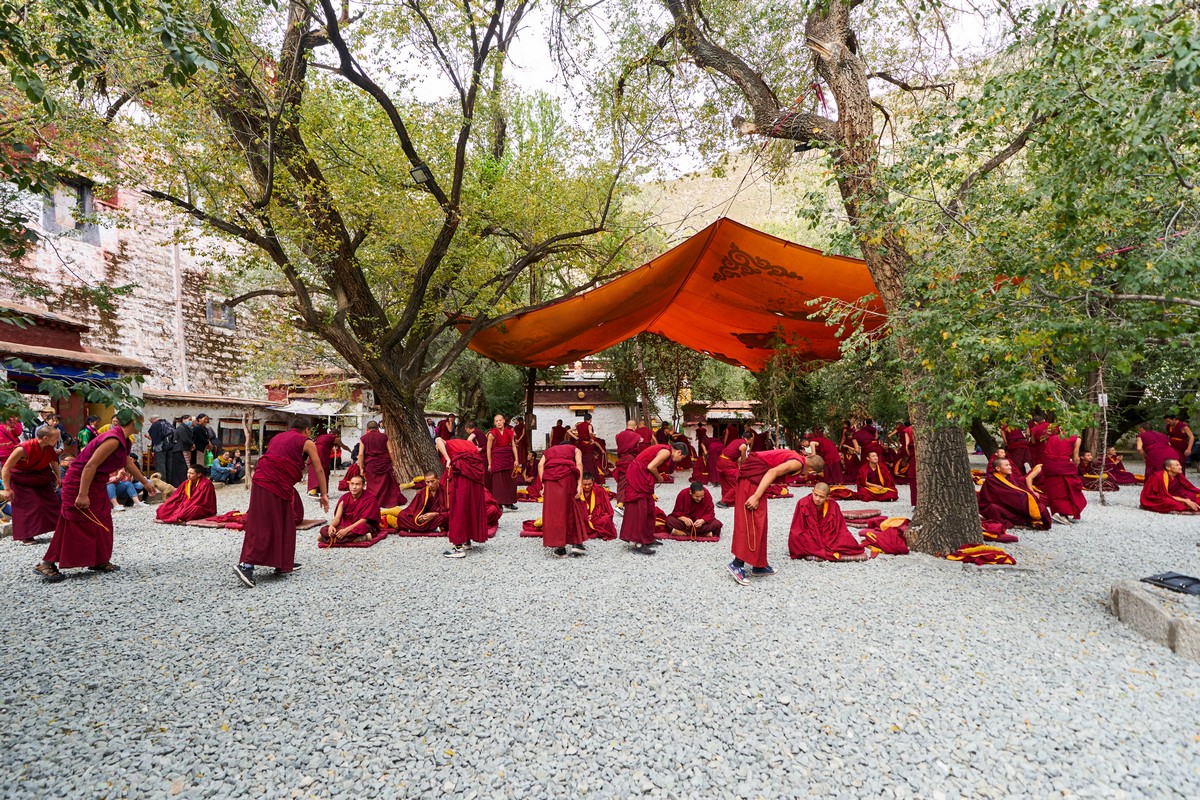
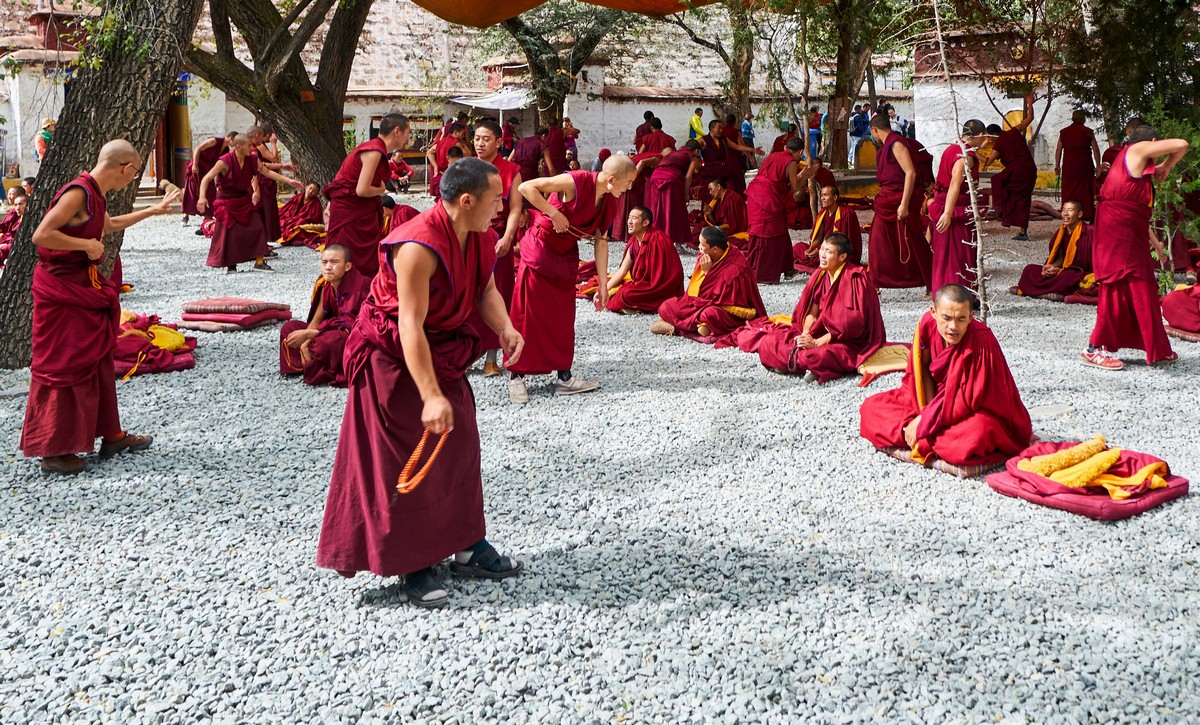
Now for some detail…
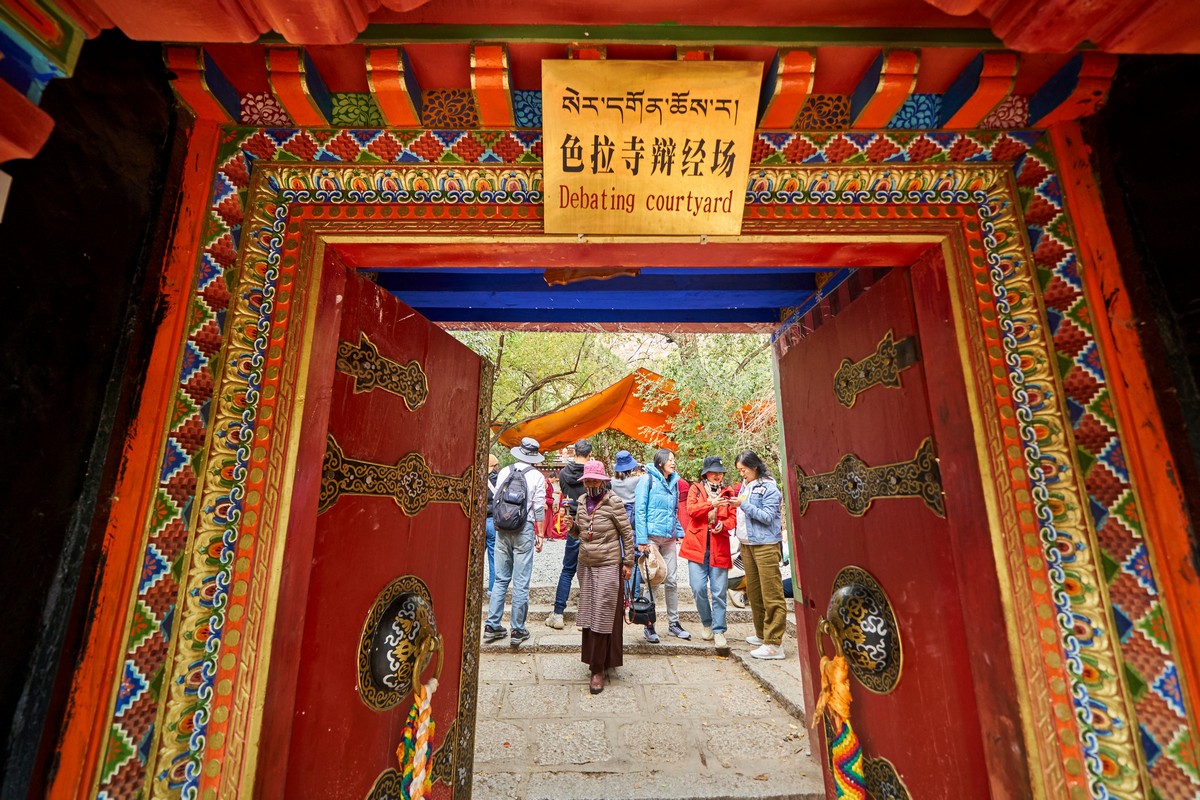
The Sera Monastery is one of the most important Buddhist universities in Tibet. It’s a place where student monks learn about all the finer – higher – aspects of Buddhism, most of which we have no grasp of whatsoever. Anyway, one of the things they learn is how to conduct a dispute with someone – here, in this square, under the watchful eye of their lecturers who sit or stand a little to the side, at first unnoticed.
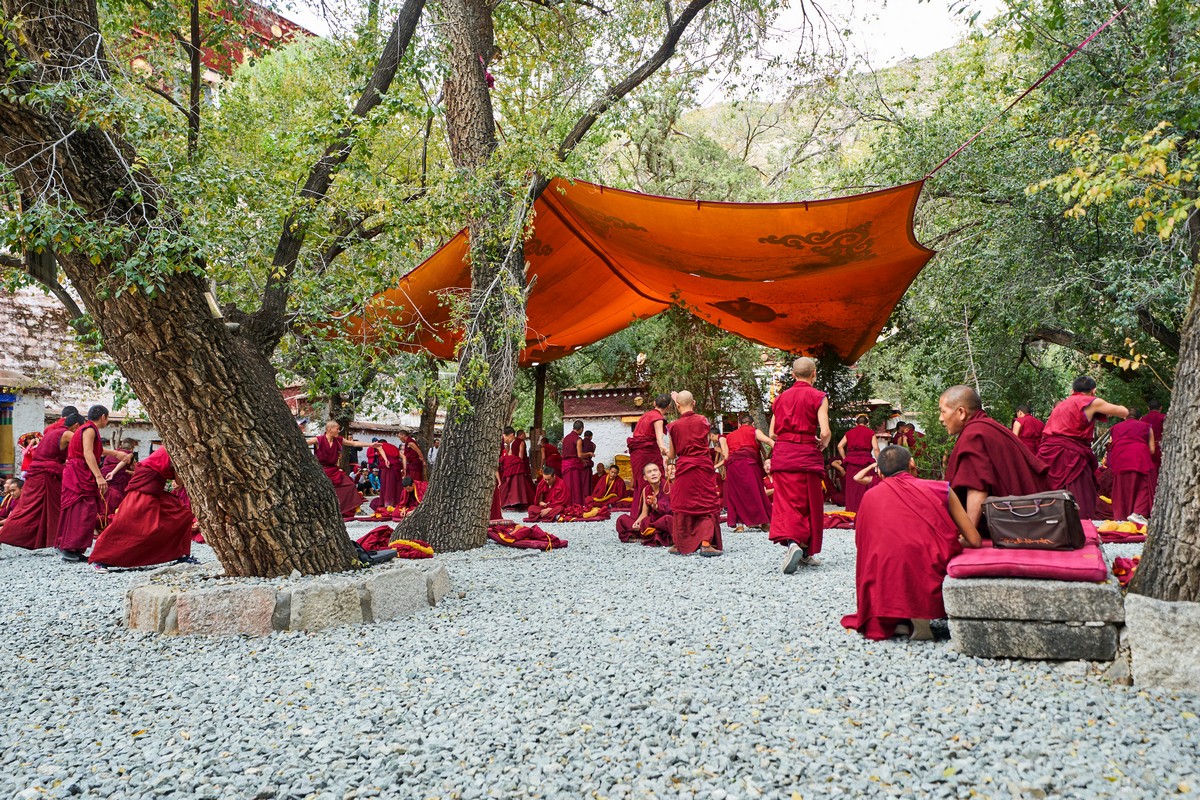
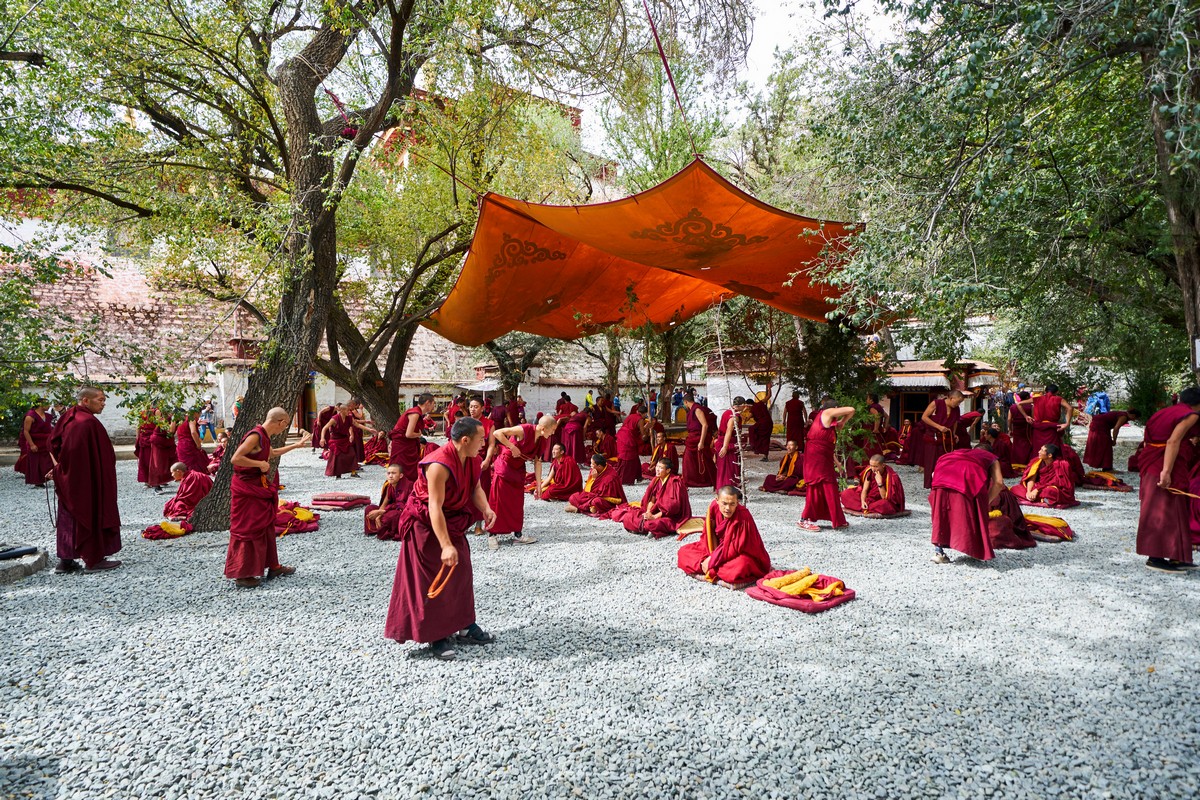
The debates, we were told, are on philosophical topics. How the world is constructed; about nature and the essence of the four elements – or is it five elements? And about other questions that are of great significance to Buddhists.
The students are put into pairs; one poses the questions (I wanted to write ‘attacks’ with questions, but surely that wouldn’t be right). The other – sat – provides his answers. The gestures they’re permitted to make are regimented and mandatory. Apparently the… poignancy of a question determines the energy level of the gesticulation. The questioner stamps his left foot on the ground – that means that all his aggression is ‘earthed’ leaving only the bare question behind. Then he claps his hands in the direction of the one being ‘interrogated’ – this means the question is ‘dispatched’. Then there’s another clap of the hands – the other way round, signifying his readiness to hear the answer. And so the ceremony goes on:
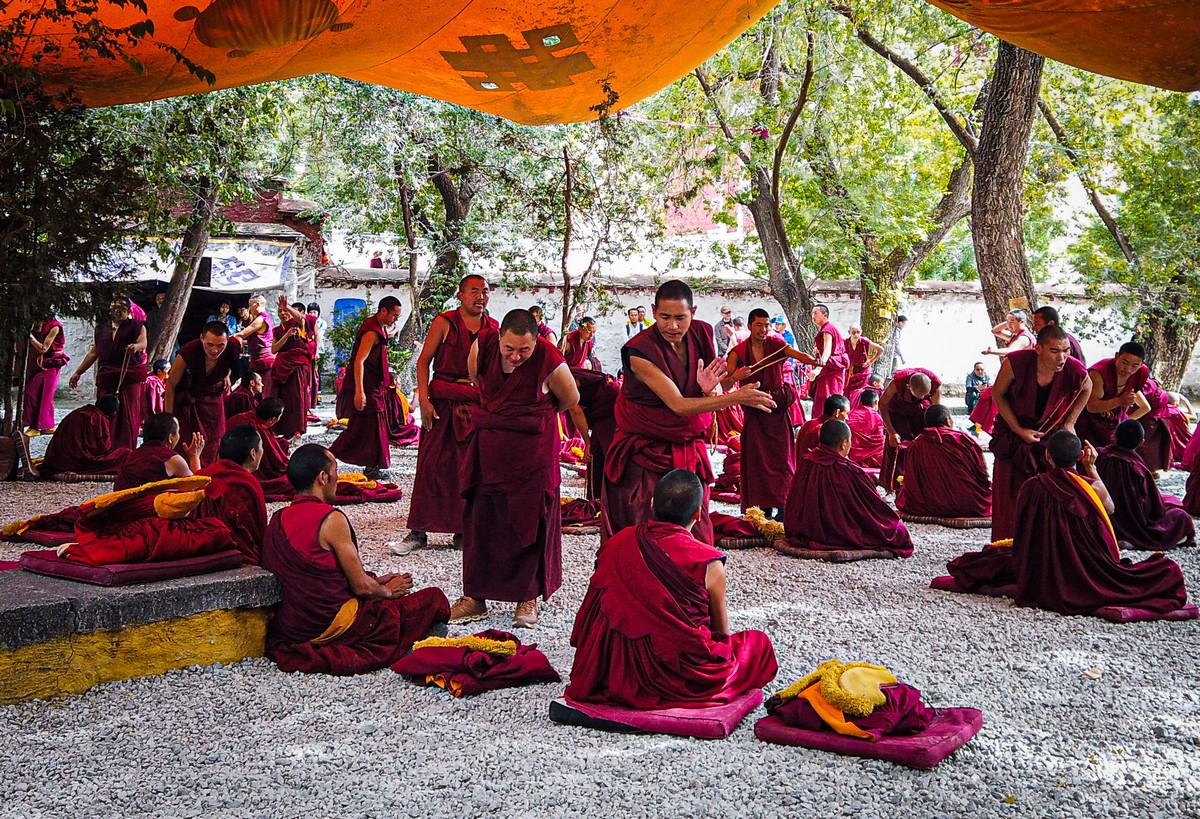
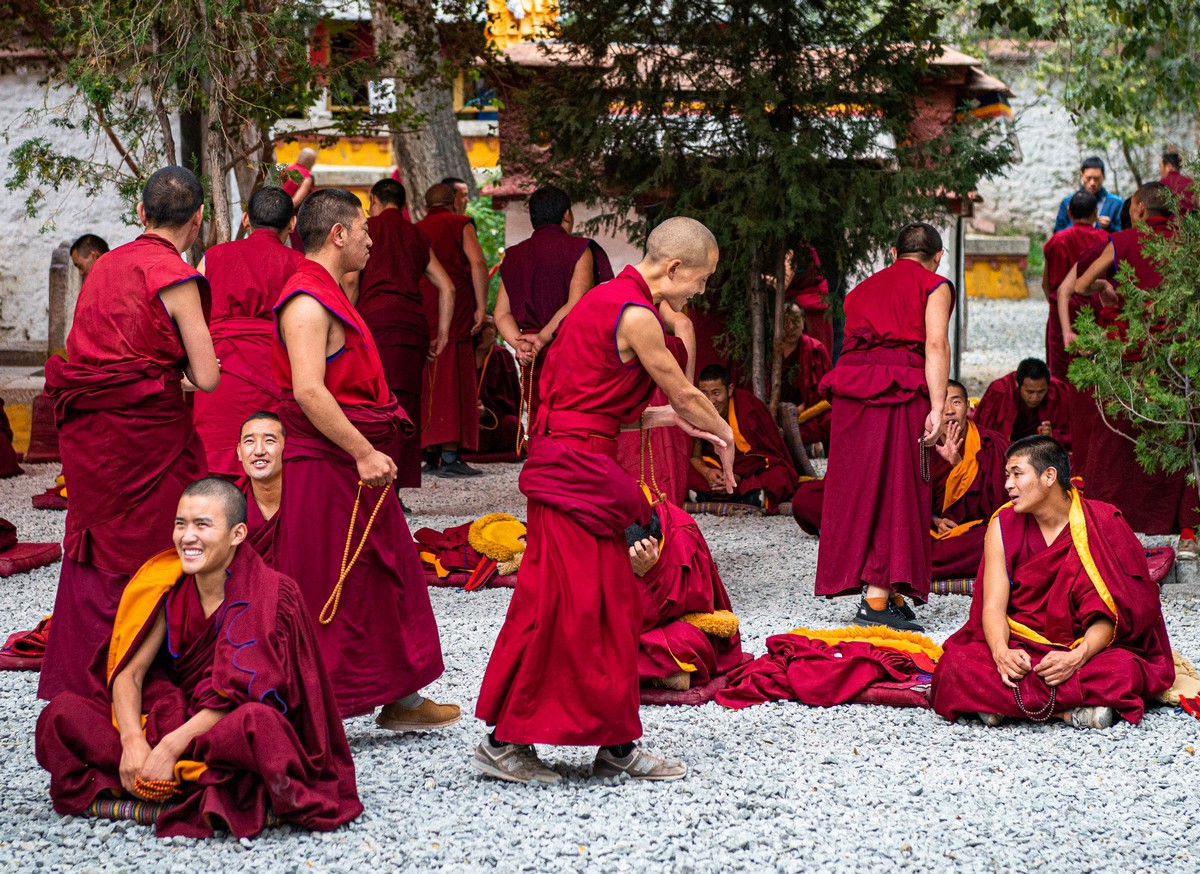
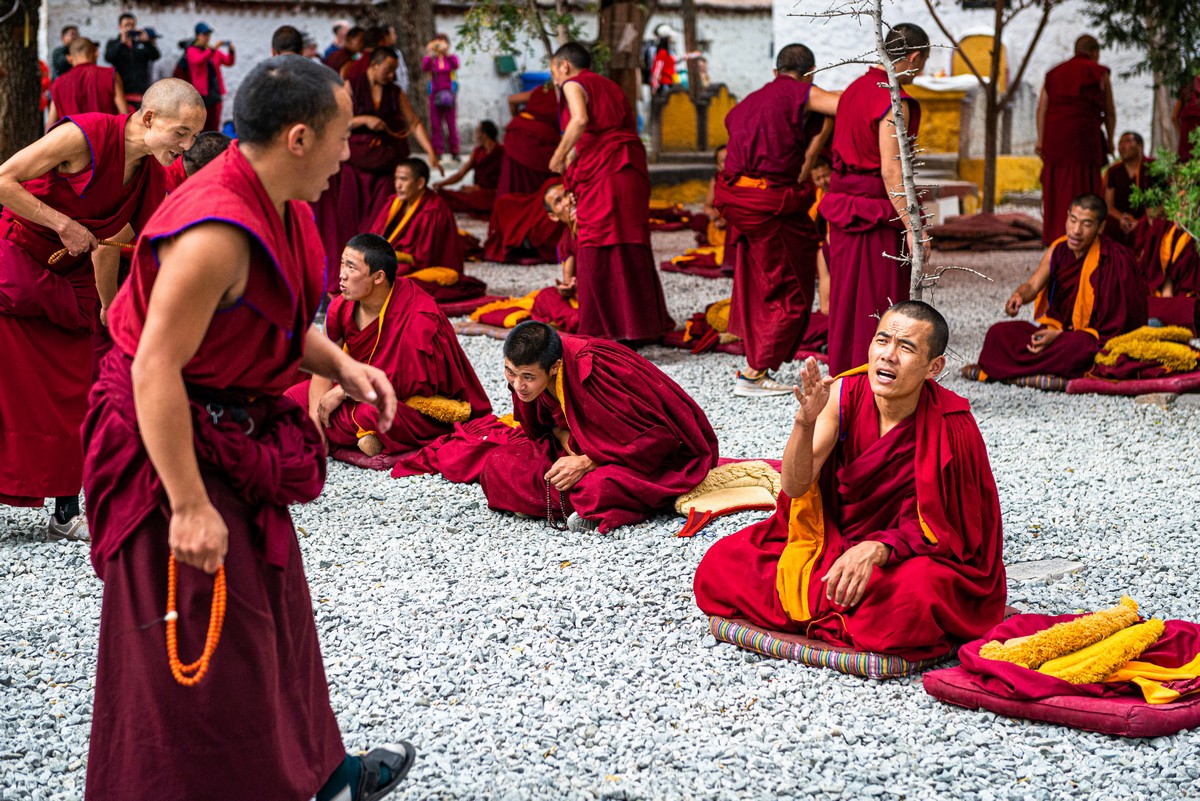
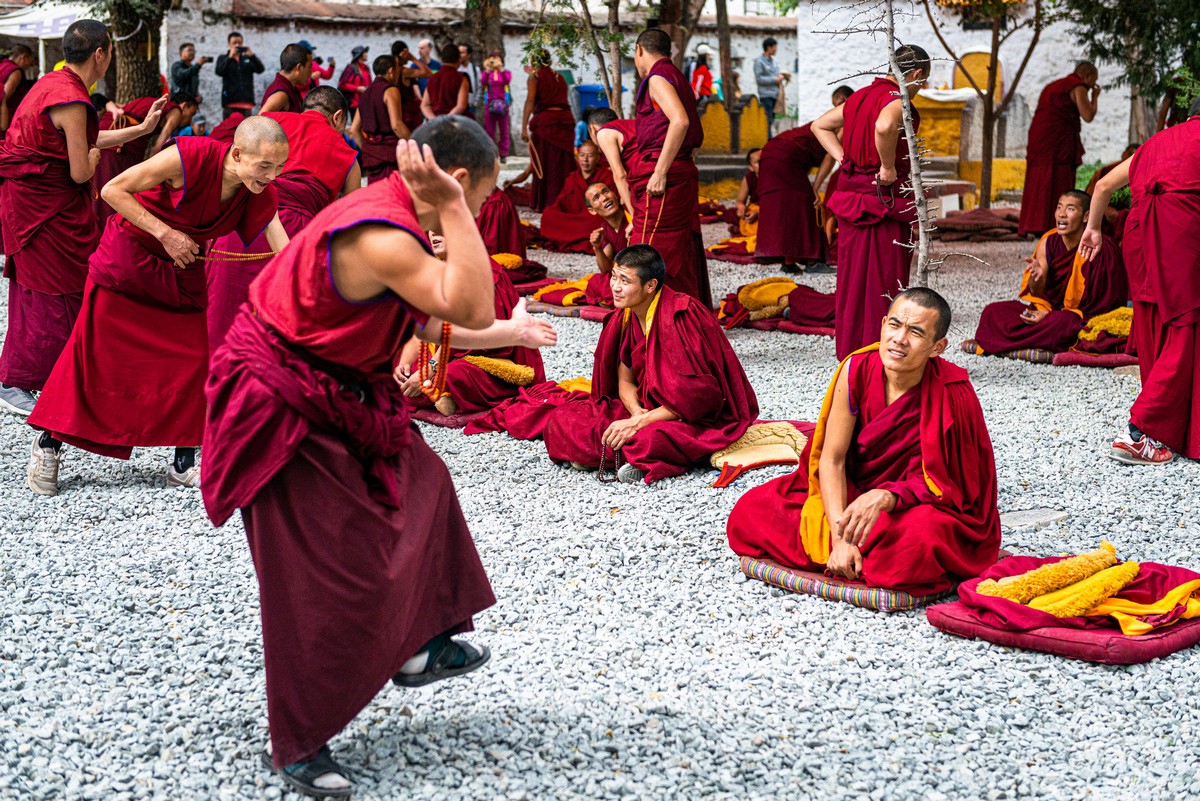
And to the sides, older, more experienced monks have their discussions too, a little more sedately. Quite what they are discussing, however, isn’t shared with visiting tourists.
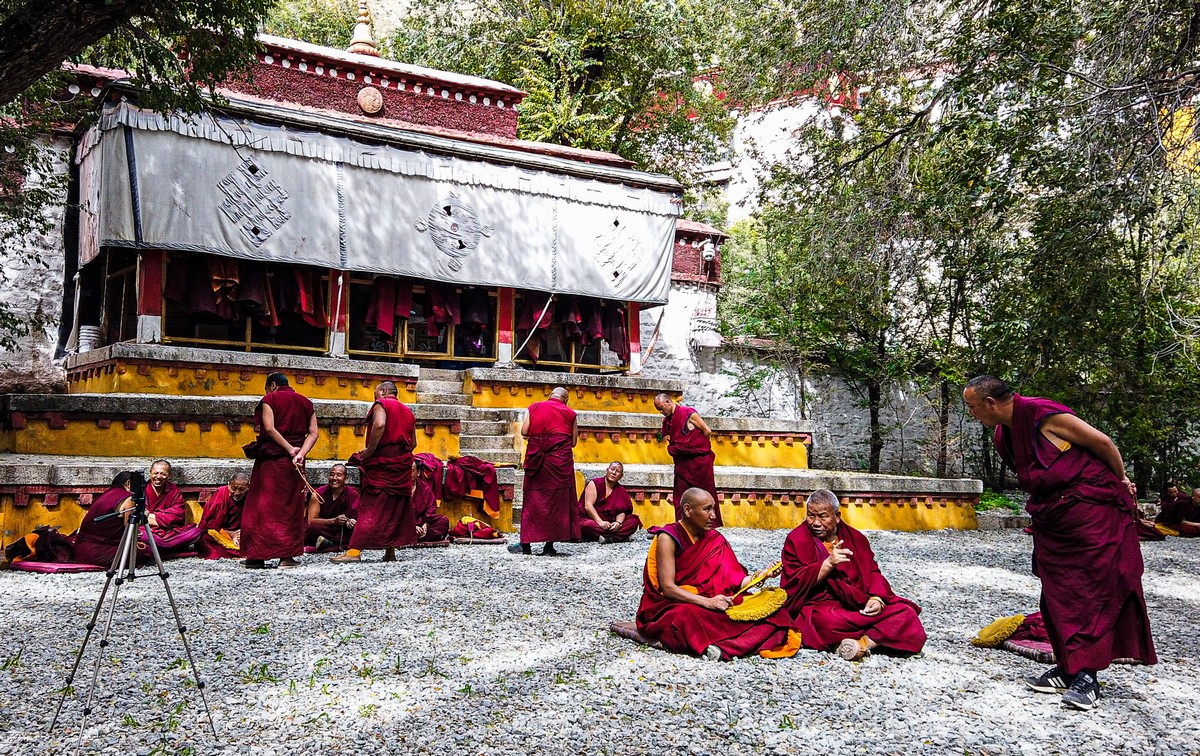
It was just after taking the above pic when someone in civvies came up to me and politely pointed out that photography isn’t allowed here. Really? Oops, sorry – my bad. Sure enough, I look around, and what do I see – a ‘No camera’ sign!
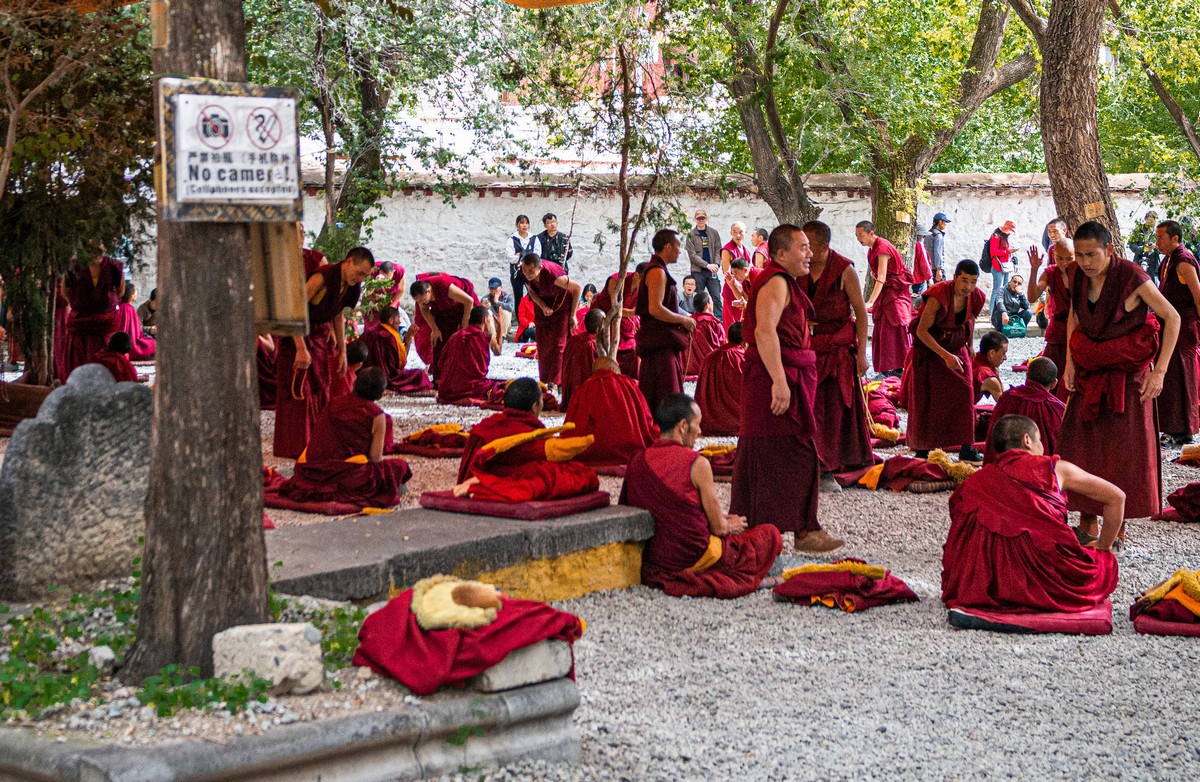
Have to say though – in my defense – that that there sign, well – it’s not very big, is it?! But also – get this: big old-fashioned SLR-type cameras aren’t permitted, but smartphones (which all have a camera) are, and you can take as many pics as you like with one! That must be logic from a higher plane or something ).
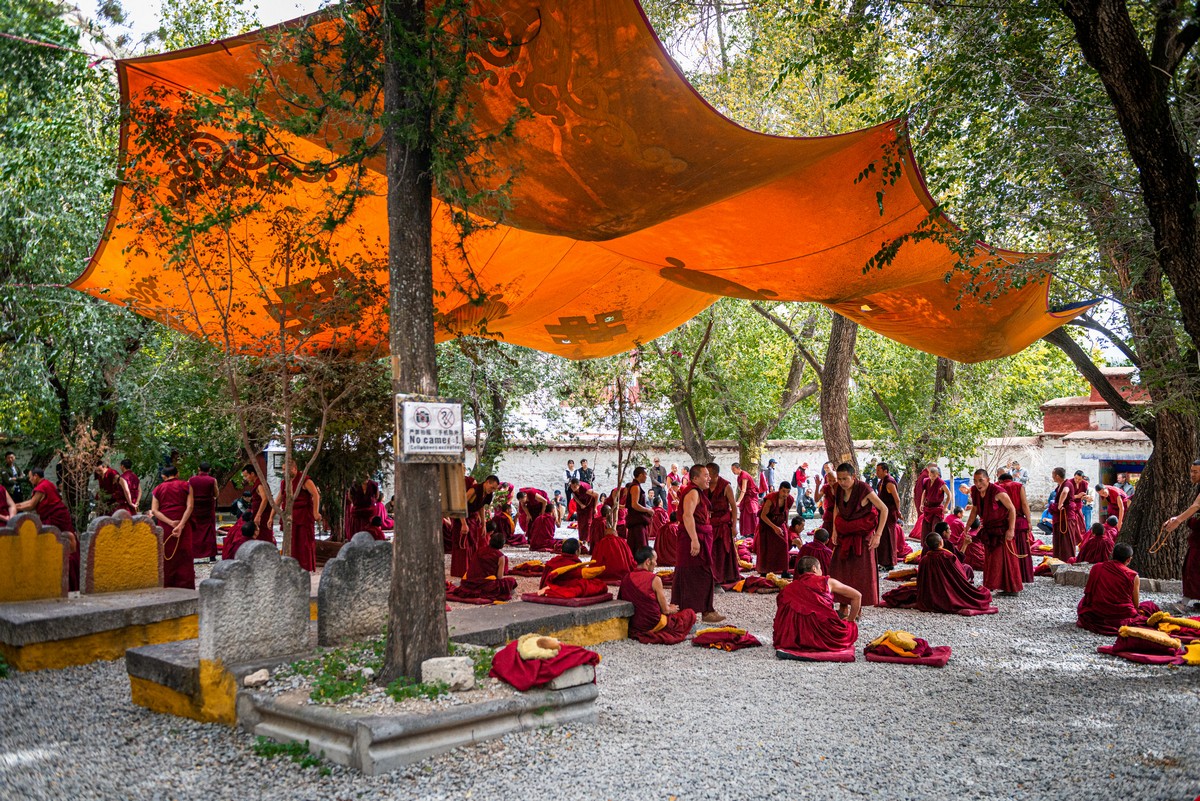
There’s actually a notice at the entrance about photography not being allowed. We missed that one, too.
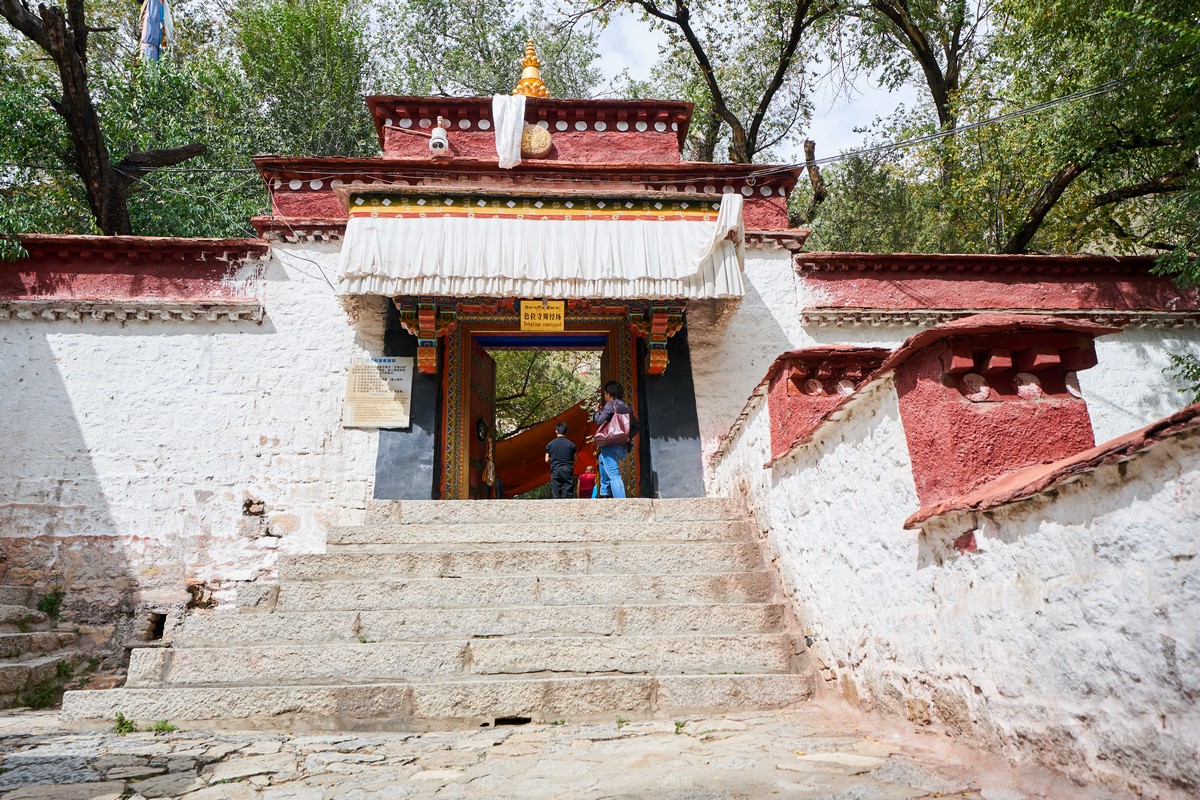
And various pics taken be D.Z. Some of his, btw, feature above too. And I prefer his to mine. He has a special button on his camera, you see. It’s called the ‘Masterpiece’ button. Wish I had one…

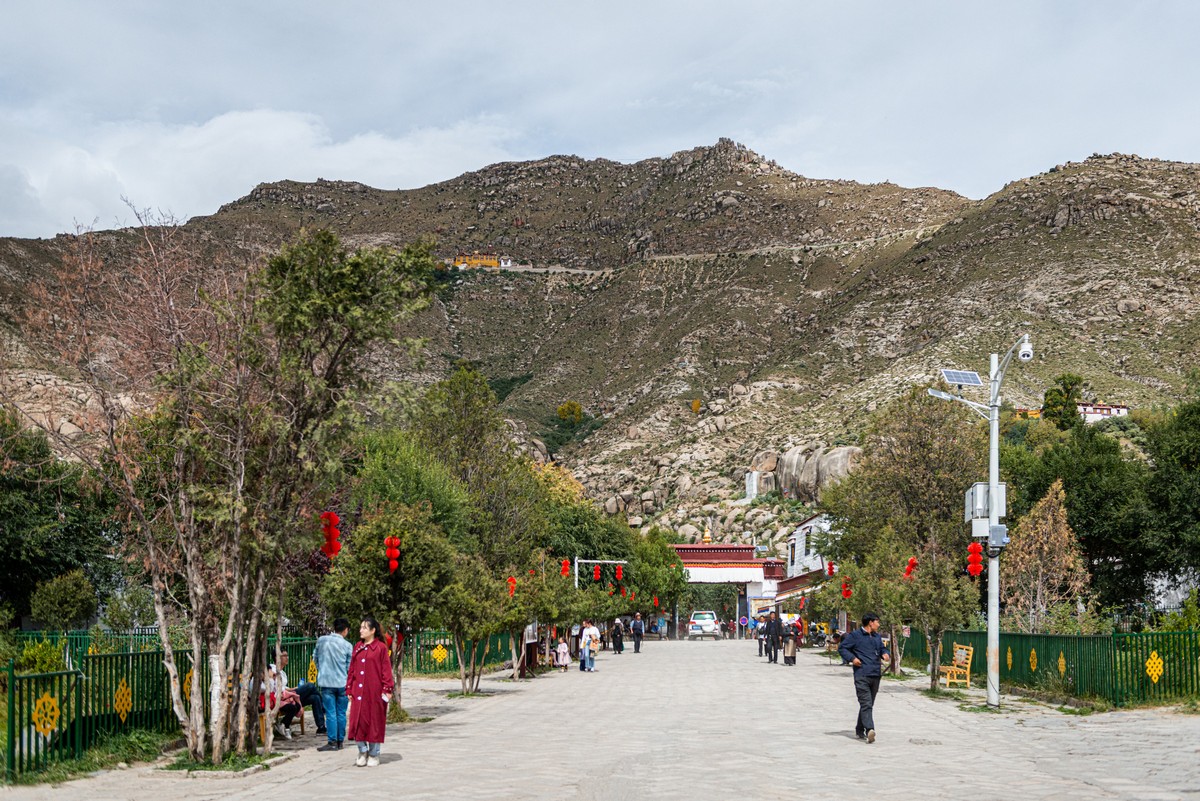
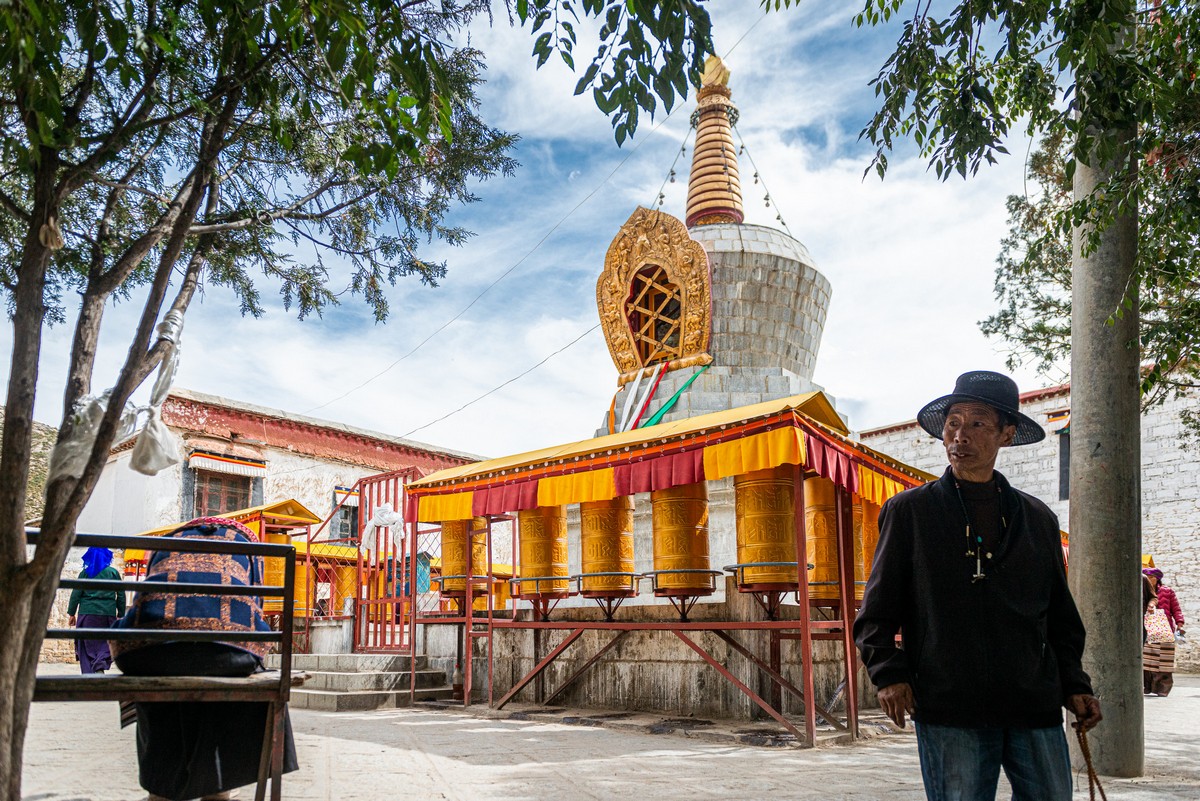
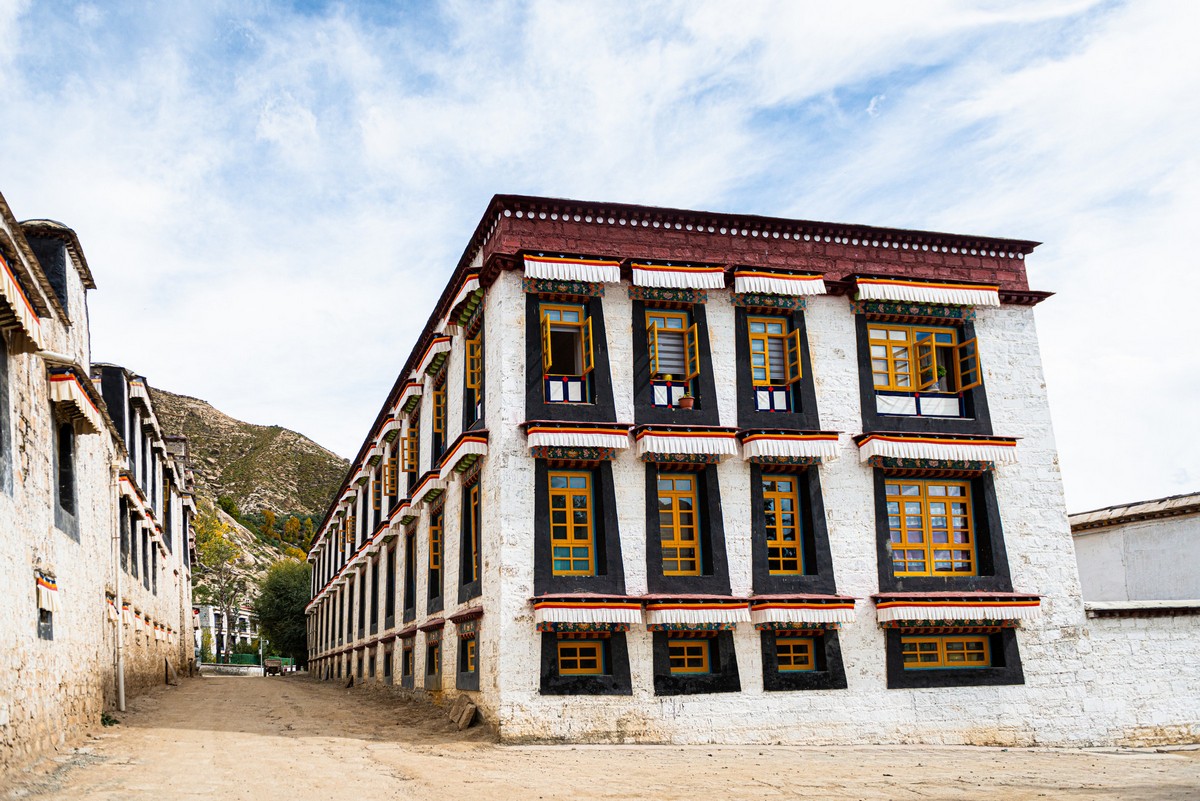
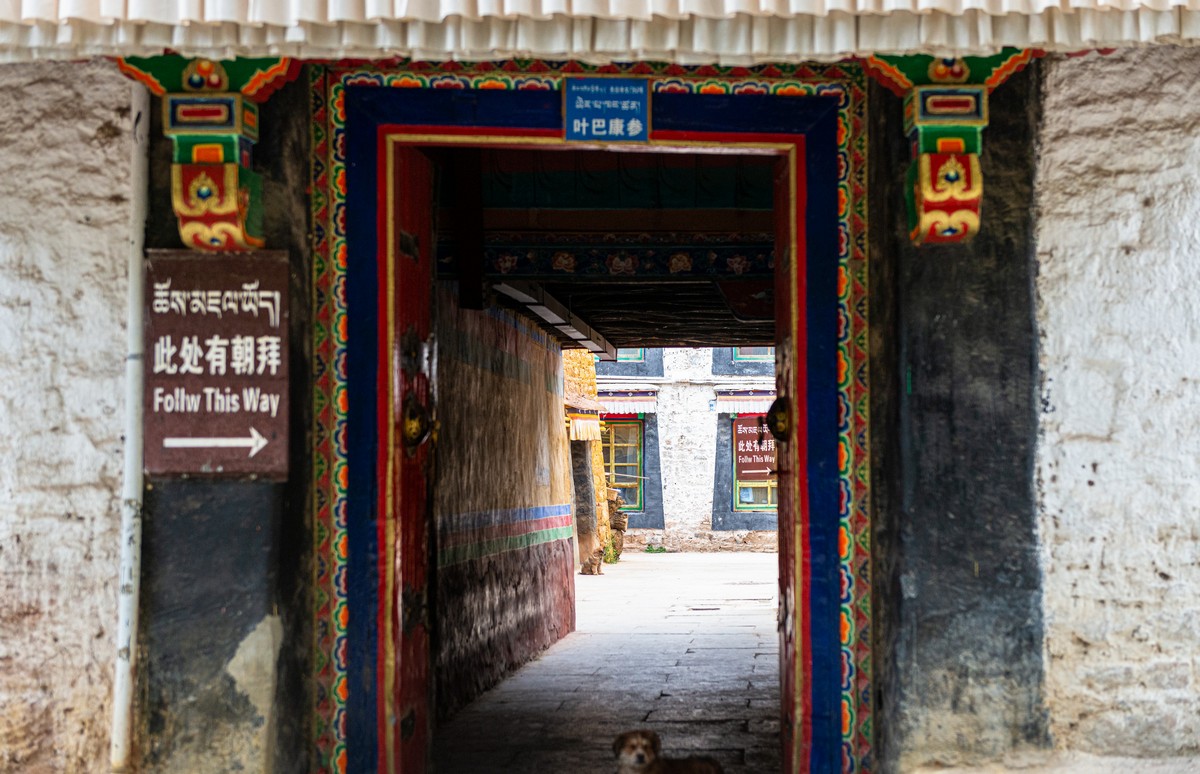
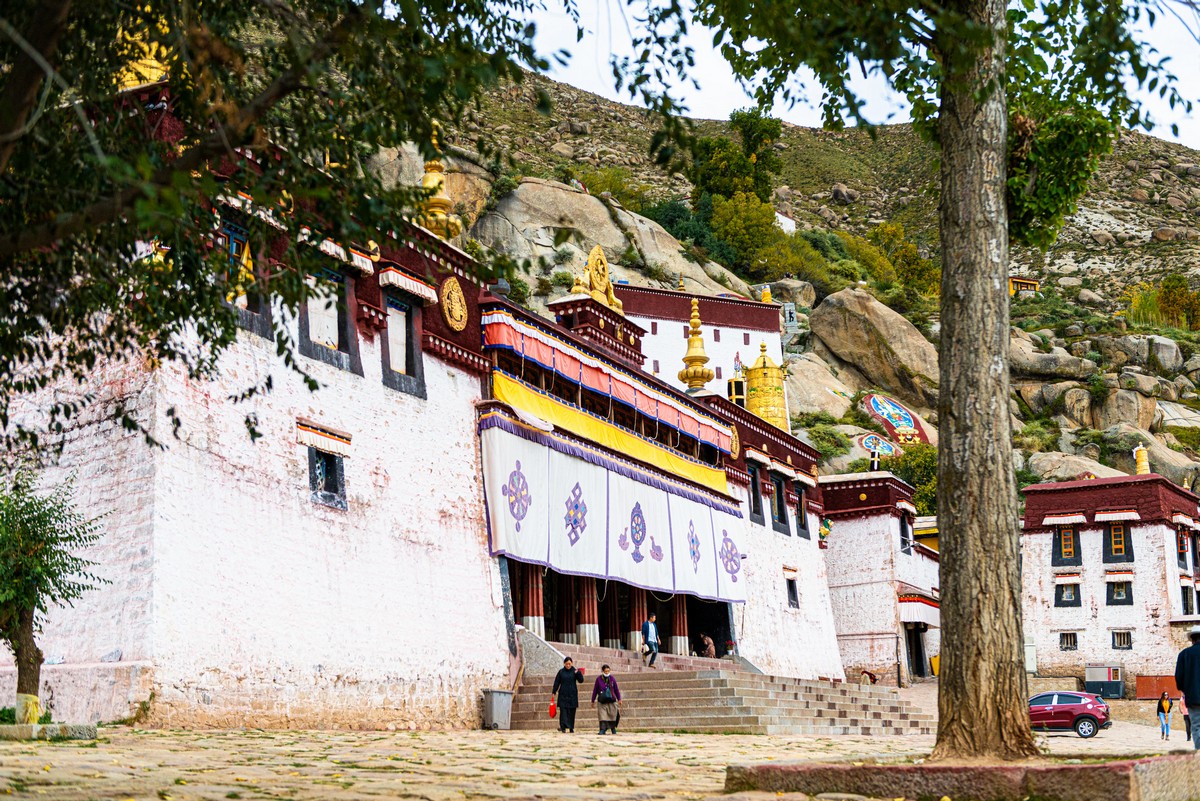
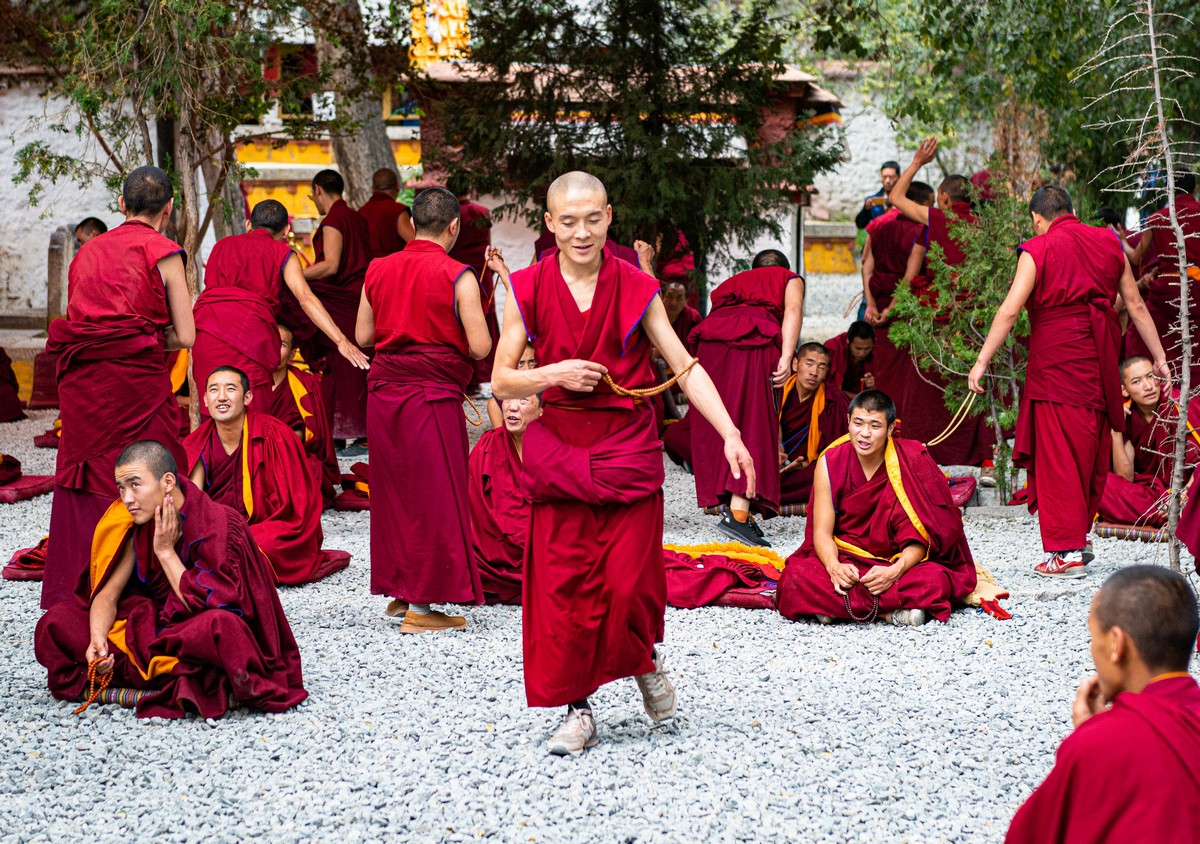
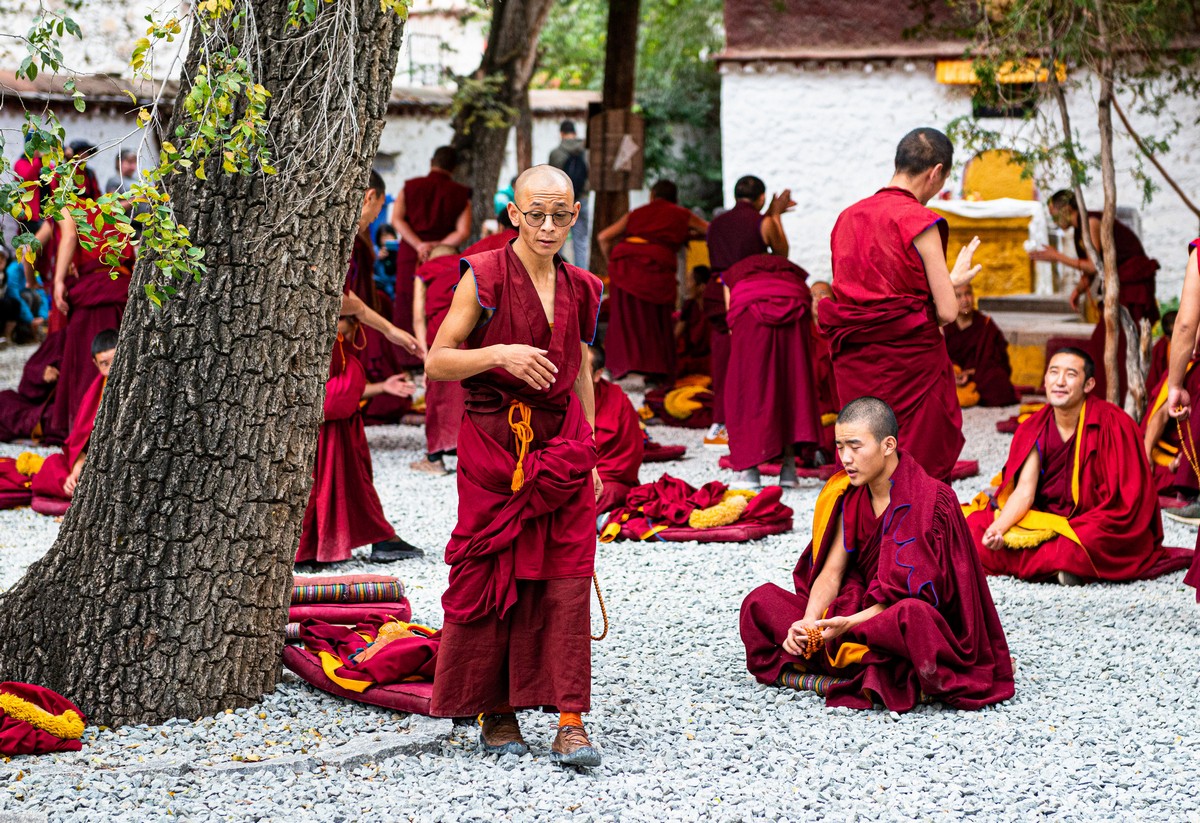
It had been a long day in Lhasa. Climbing up to Potala, the debates in Sera. Our heads were spinning a bit with all the uniqueness, unusualness, otherworldliness, awesomeness. Plus, of course, we were at 3600 meters above sea level don’t forget, so that spinning of the head was even more acute. Accordingly, we kept things moving reeaal slow…
Next up – another ancient ancientness: the Jokhang Buddhist temple.
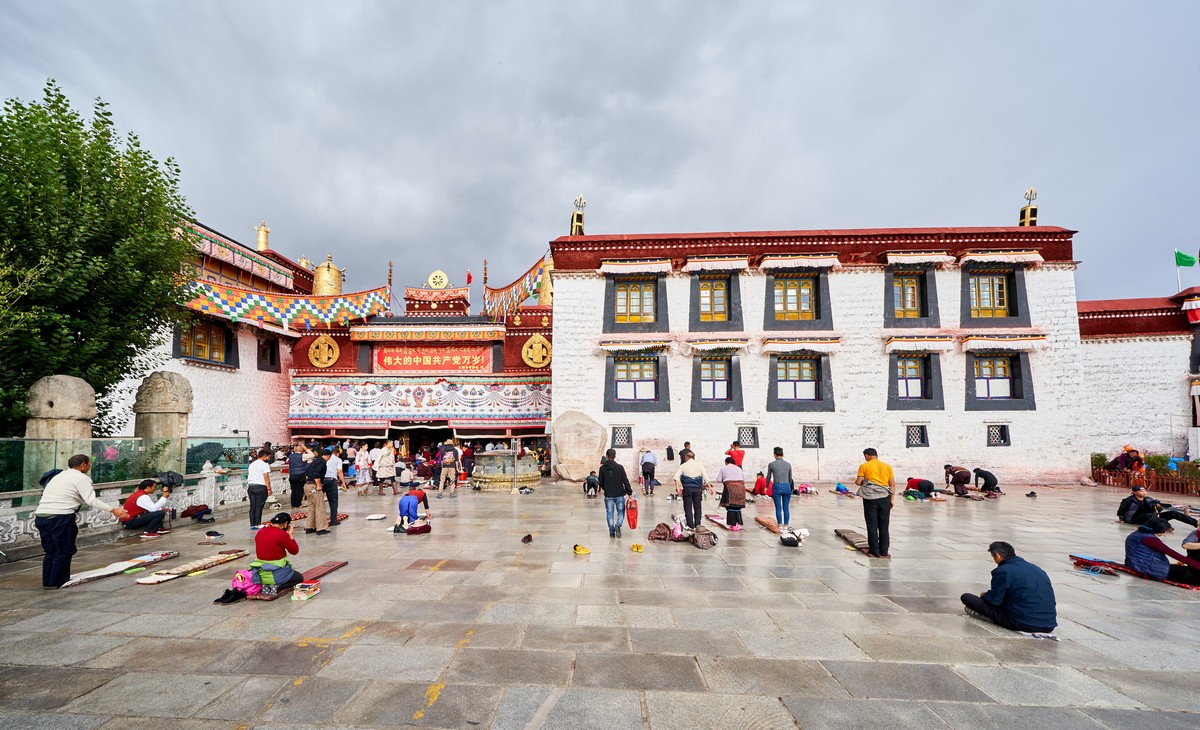
I’d have taken pics of the whole complex from outside, but I couldn’t as all around it is now built up. In fact, this monastery was the original settlement here, and the rest of Lhasa grew around it.
The place truly is ancient. It was founded in the seventh century – not long after the fall of the Roman Empire!

And ever since its founding, this center of Buddhism has been in operation without a break. Empires came and went, periods of obscurantism came and went; this complex lived through it all…
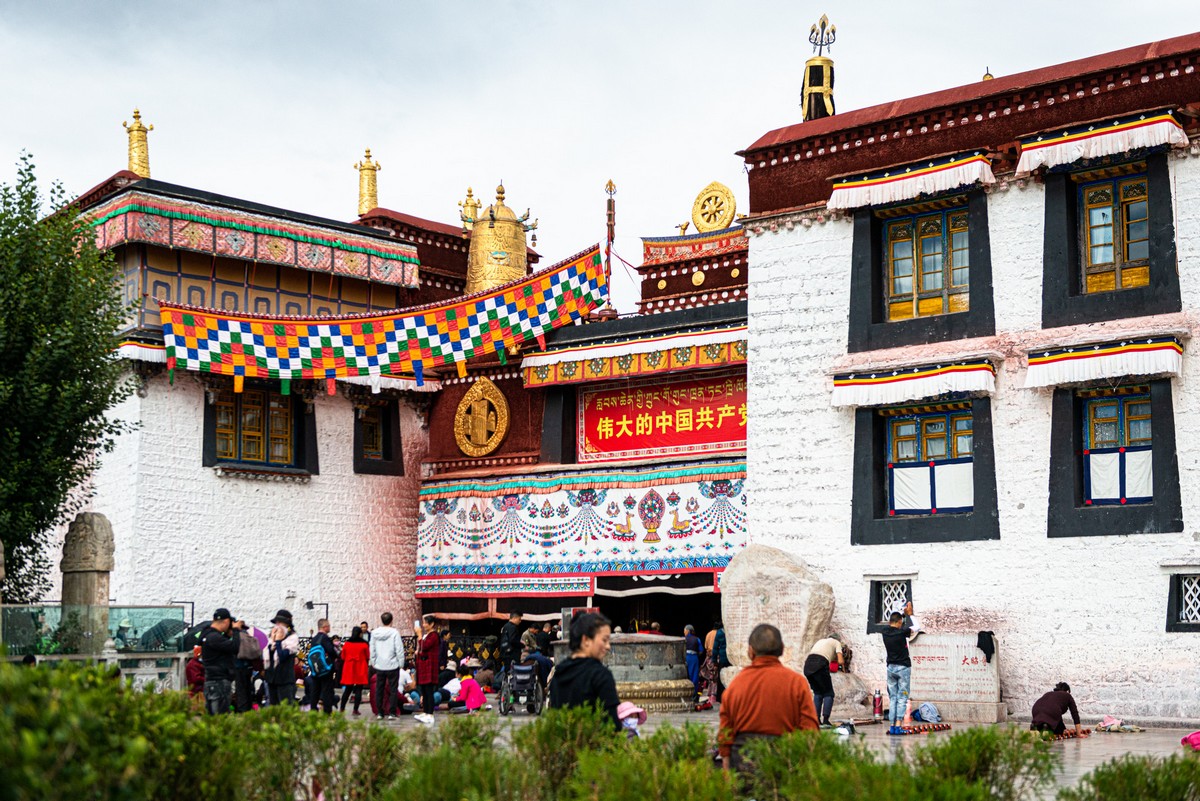
This is the holiest of holy places for Tibetan and Chinese Buddhists, and probably other ethnicities too. Let’s see – Mecca is the main sacred place of worship for Muslims, the Vatican – for Catholics, Jerusalem – for different religions, but in different places. Lhasa – the main sacred place of worship for all Buddhists. And they don’t just pray here. They also go for prostration too.
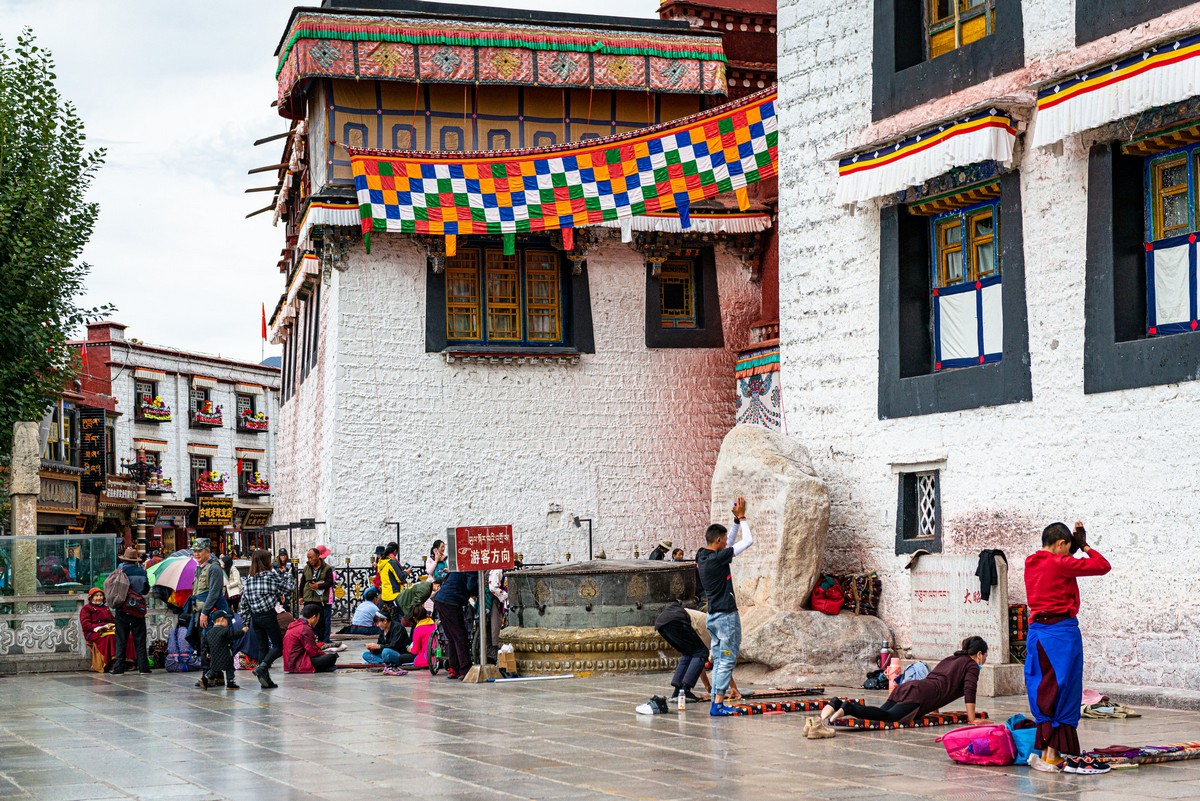
They go for ‘what?’ I can hear some of you ask. Ok, here’s the Wiki-info:
‘A prostration is a gesture used in Buddhist practice to show reverence to the Triple Gem (comprising the Buddha, his teachings, and the spiritual community) and other objects of veneration.
Among Buddhists prostration is believed to be beneficial for practitioners for several reasons, including:
- an experience of giving or veneration
- an act to purify defilements, especially conceit
- a preparatory act for meditation
- an act that accumulates merit (see karma)
In contemporary Western Buddhism, some teachers use prostrations as a practice unto itself, while other teachers relegate prostrations to customary liturgical ritual, ancillary to meditation.’
So now you know ). And here’s what it looks like in the flesh:
This is a fenced square intended specially for prostration:

Tourists are permitted there too, as is photography. Genuine Buddhism isn’t bothered by external irritants ).
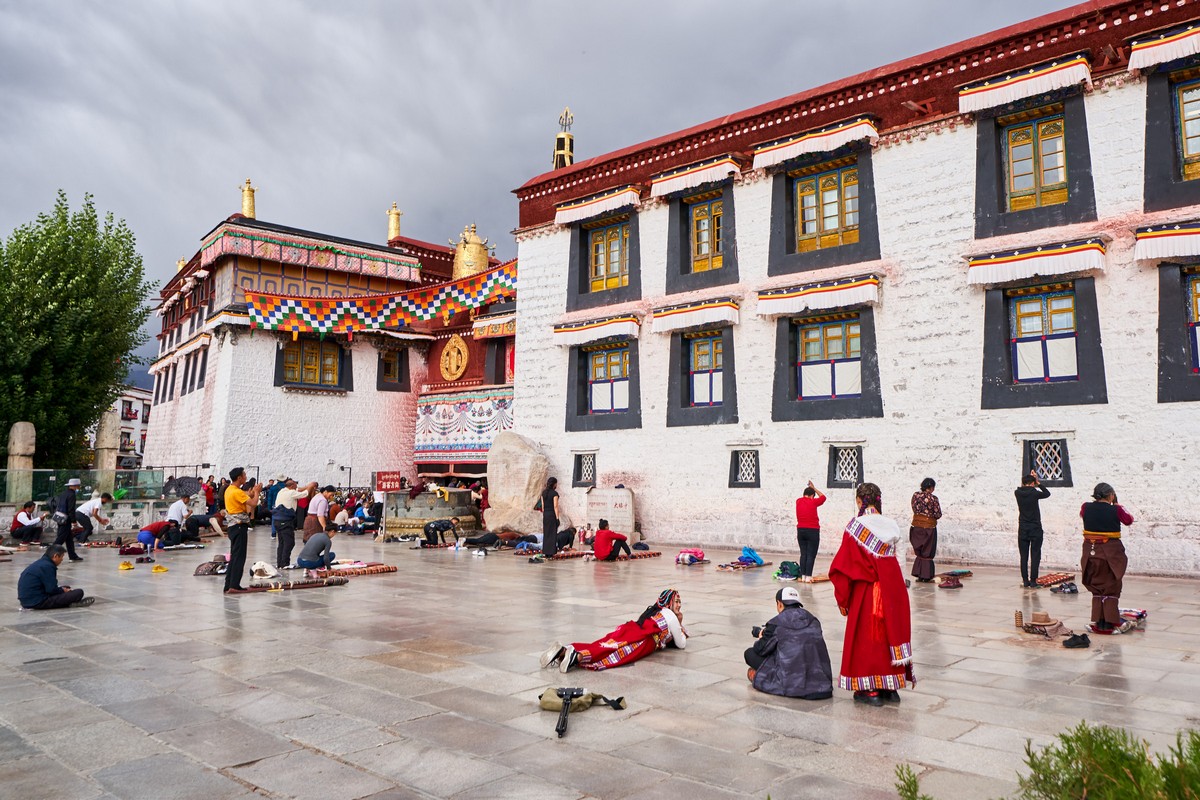
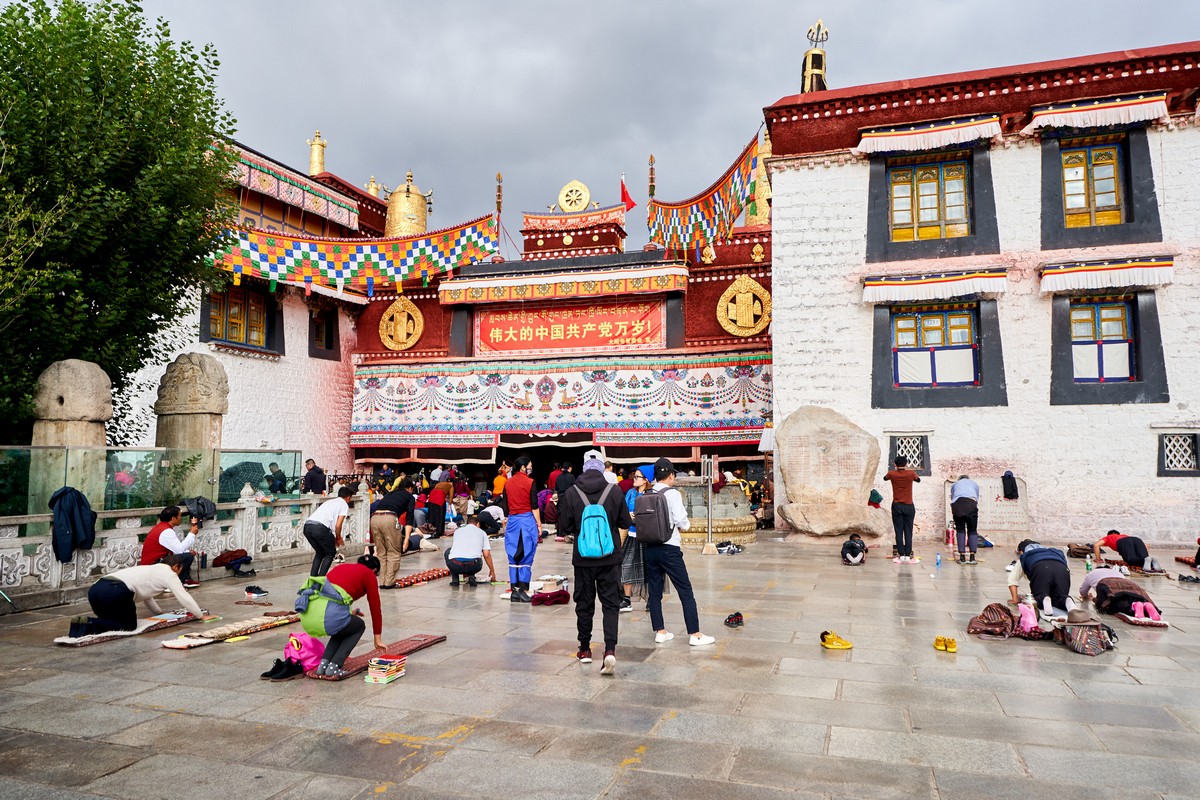
All righty – let’s get inside…
Holiest of holiest remember, but there’s no checking your religion on the way in. Inside it’s all rather modest. Oh, and my pics: no other tourists therein!

Of course tourists come here, it’s just that we chose the optimal time for our visit – right after Golden Week. I’ve shared this ‘secret’ before; so I won’t repeat it. Ah – here they are: the inevitable tourists (though not too many) ->
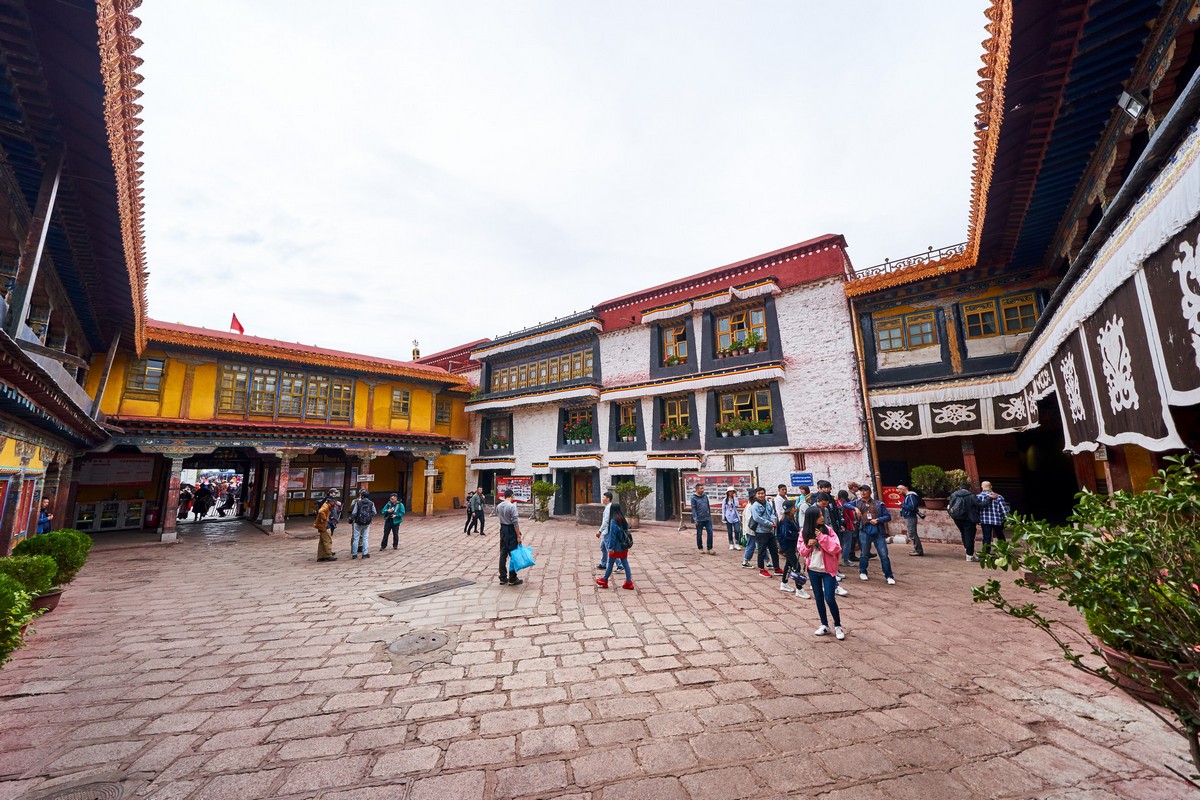
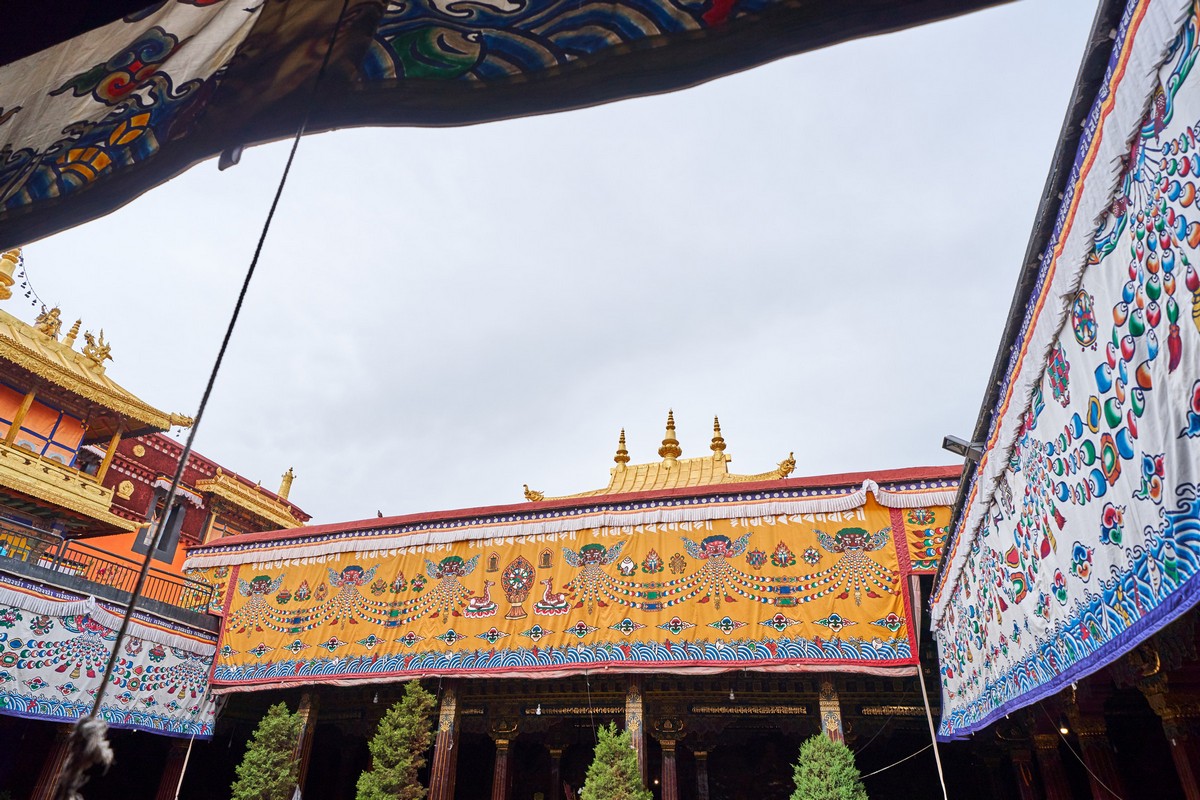
Alas, no photos from here. Accordingly, you’ll have to settle for my written impressions…
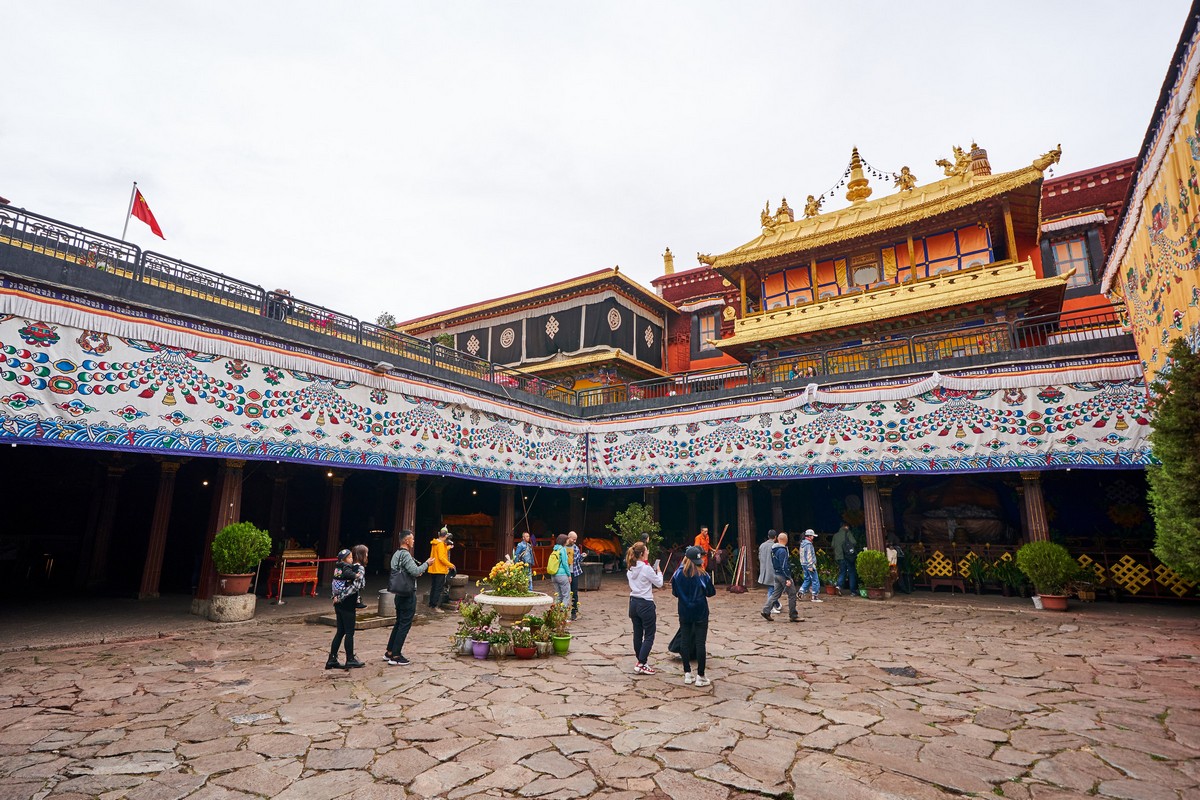
- The Buddha in the Yonghe Temple in Beijing is taller. But that can’t be snapped either;
- The holiest of holy ancientnesses simply wouldn’t fit into any camera’s viewfinder anyway;
- Practically all the worshippers here leave money – a few notes of the local currency. Those notes are then placed into gunny sacks until they weigh around 30kg, then women who could be anywhere between 30 and 60 years old carry these sacks off somewhere;
- The smells are… unusual. Are they from the yak fat in the candles? Not sure. Let me just say it’s best to ‘train’ your olfaction before you get here );
- Prayer time is the time to come; what can I say? 10/10 impressions for sure. It goes like this: the monks start to come together in the square; they sit and talk among themselves. Things get quieter, but not silent. Then someone starts to sing a prayer, or is it a mantra? Uptempo. Like music in a night club! Rhythmical. No music; just male voices in chorus.
Here’s something I found on YouTube, but live it’s really something. Live it’s simpler louder, more hypnotic. You get into it. You start humming along. You lose yourself in the music! Rave – Tibetan style ).
But it’s time for us to leave…
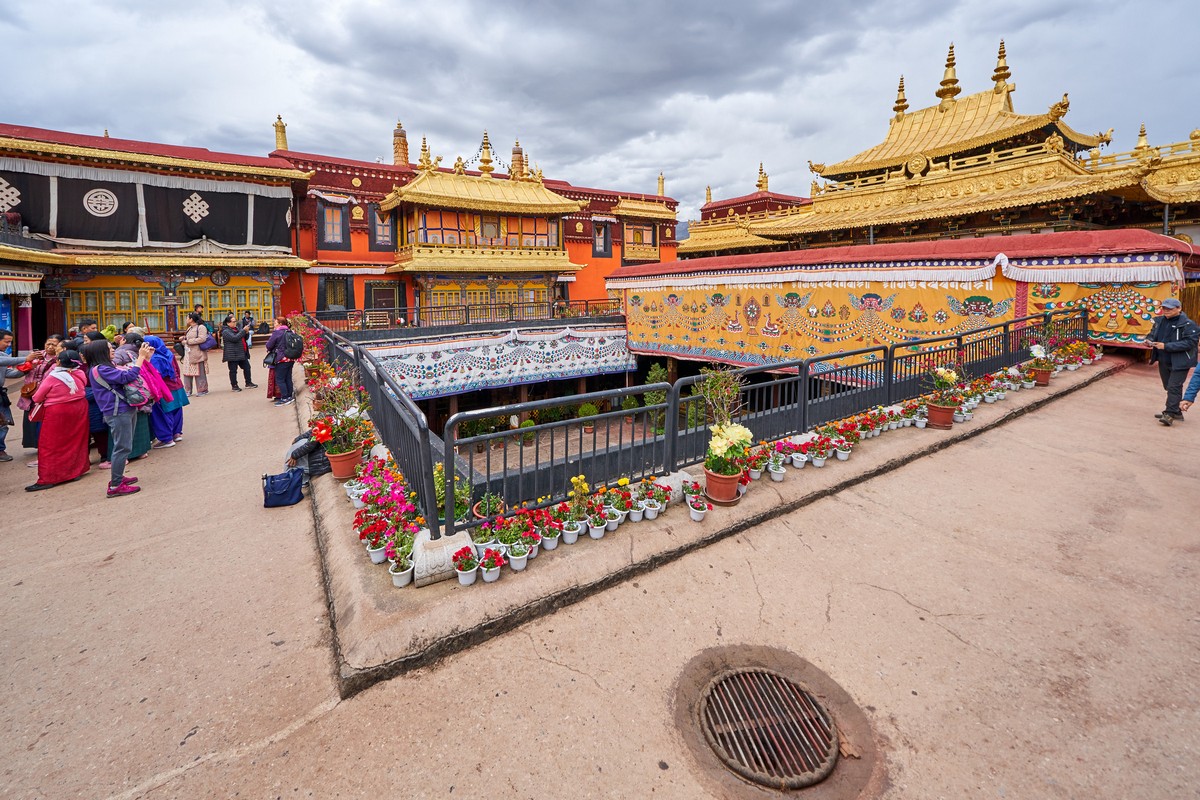
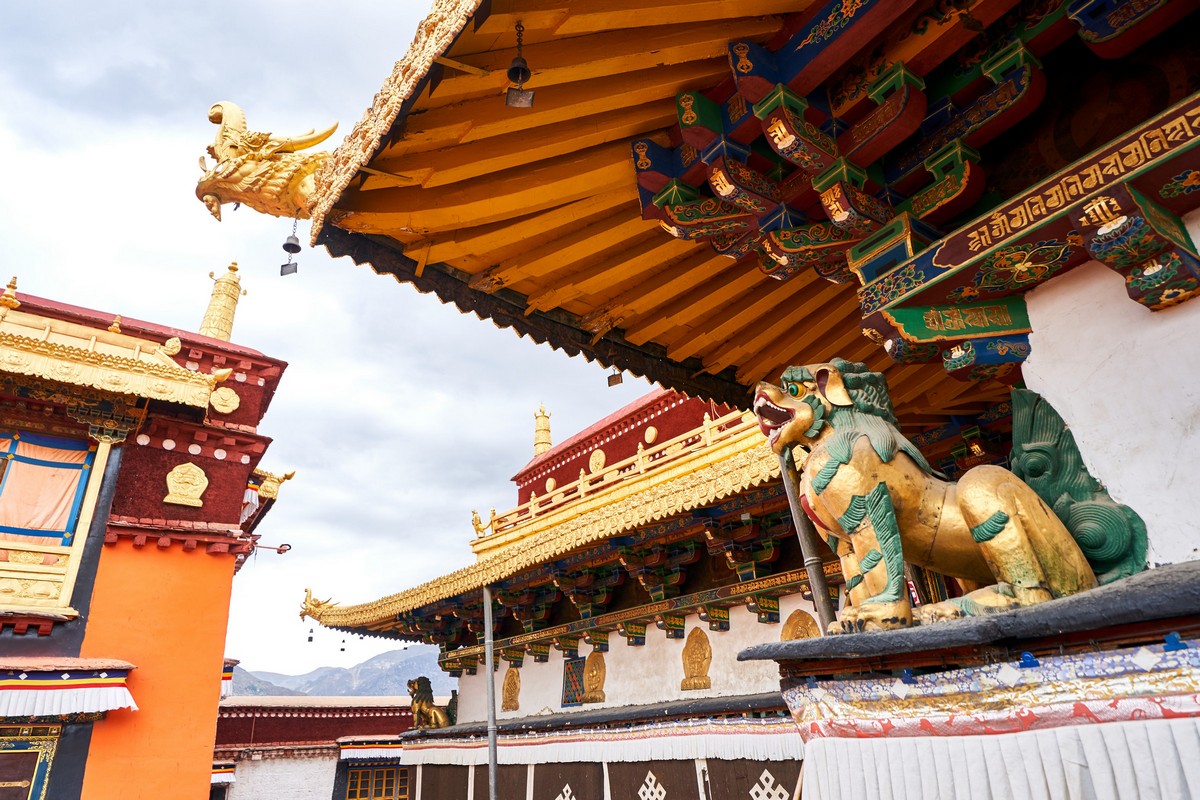
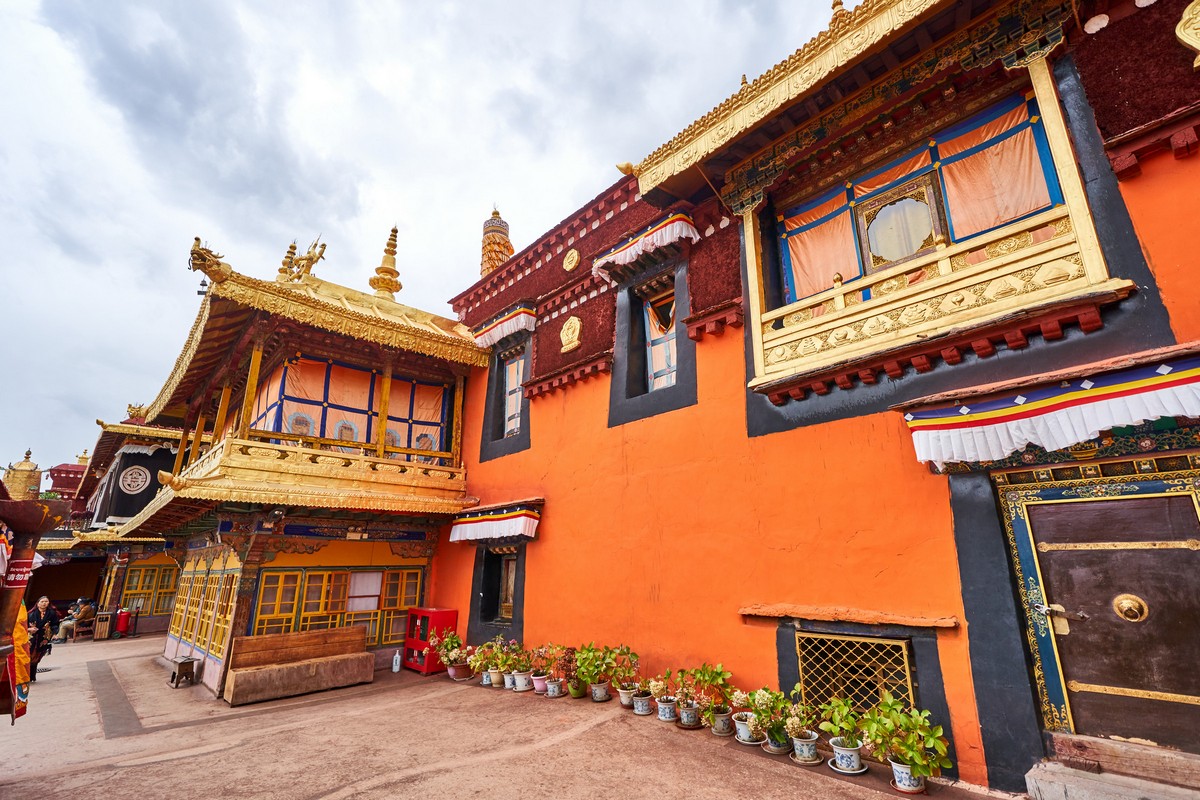
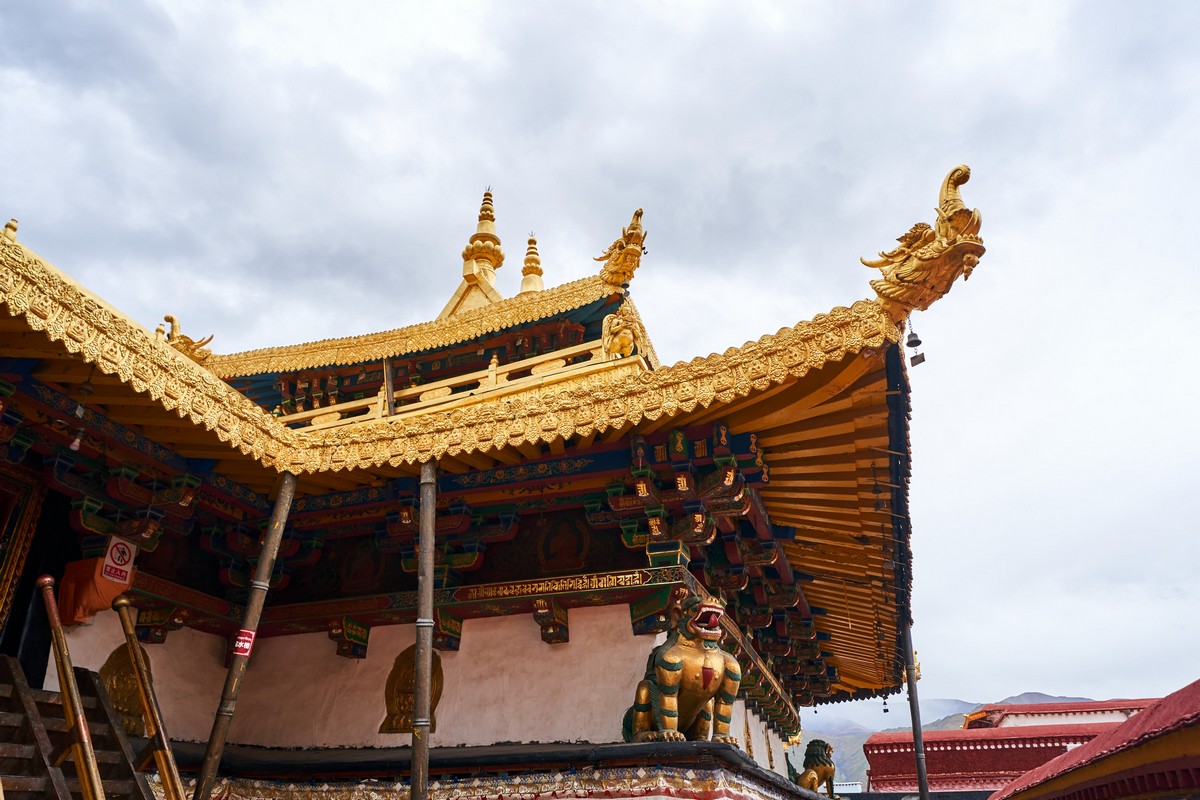
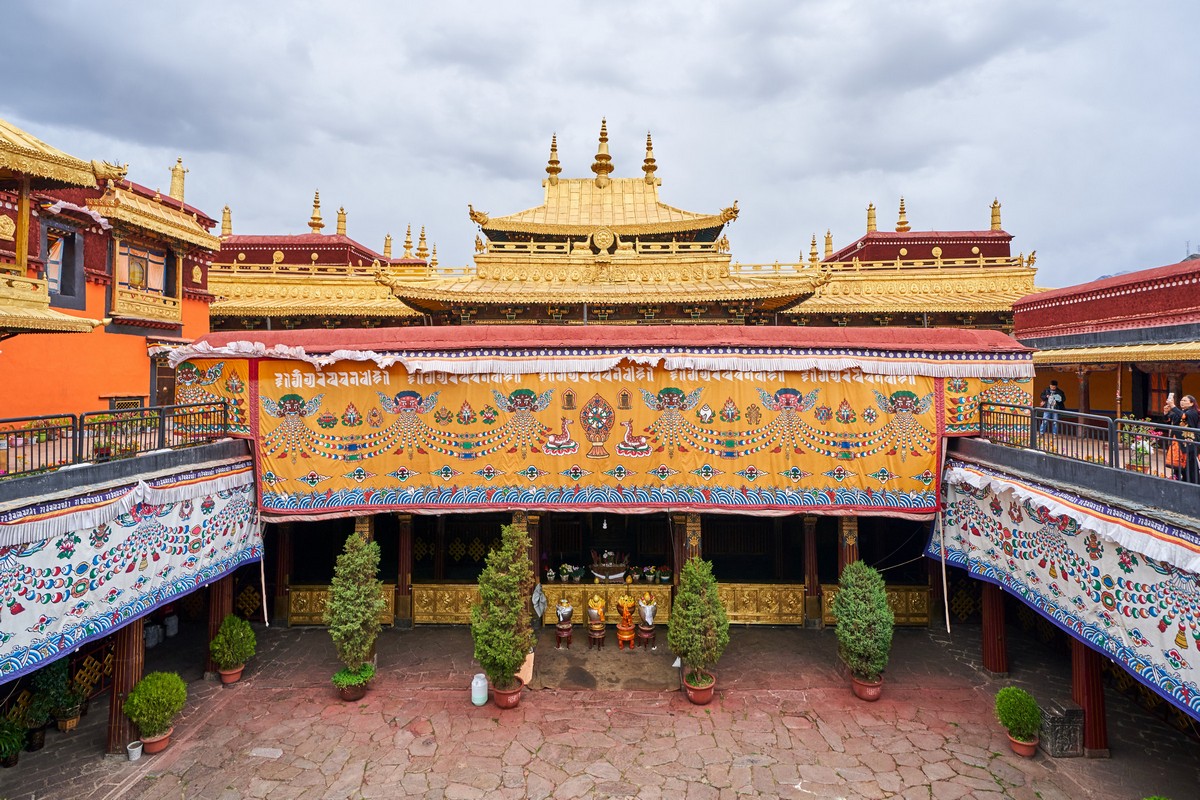
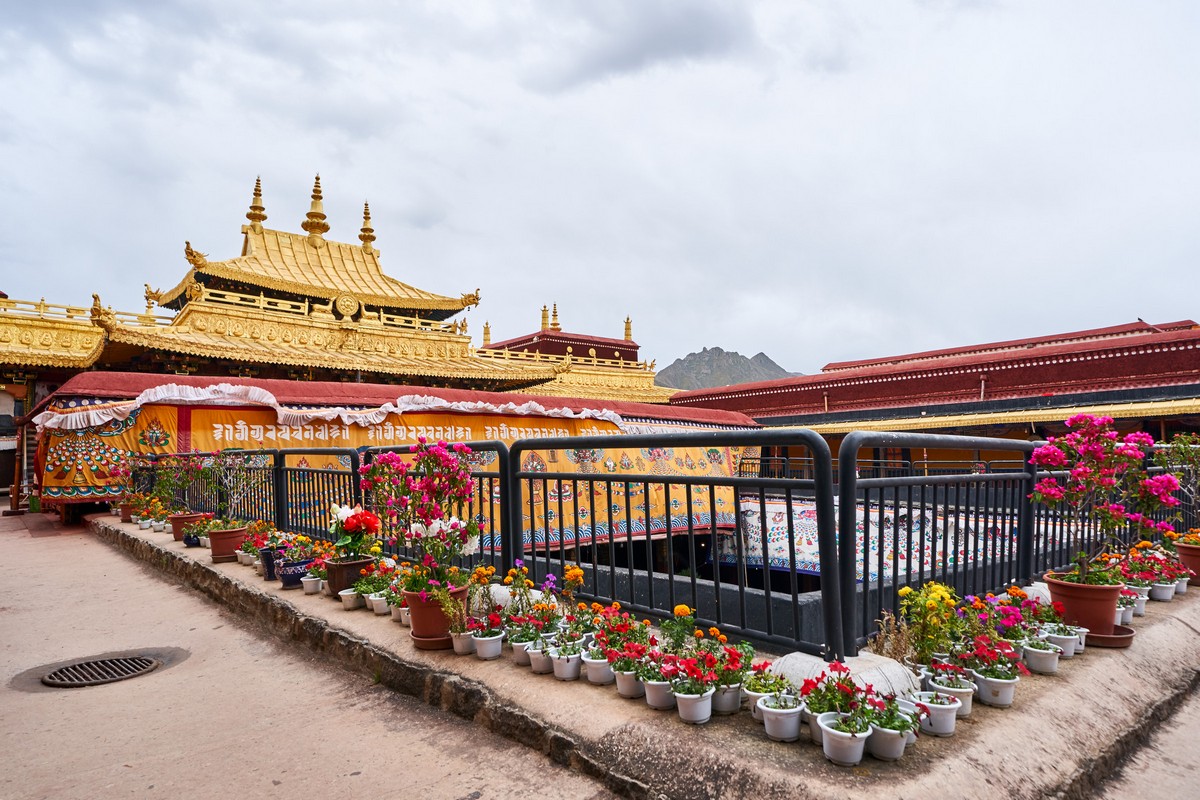
This is simply a photo of living quarters, away from the main attractions. Livable, ancient…

Souvenir shops, which reminded me of St. Peter’s in the Vatican. We bought a few knick-knacks and headed out. We wanted to catch Potala-by-night.
PS: As has become a tradition – pics by D.Z. ->
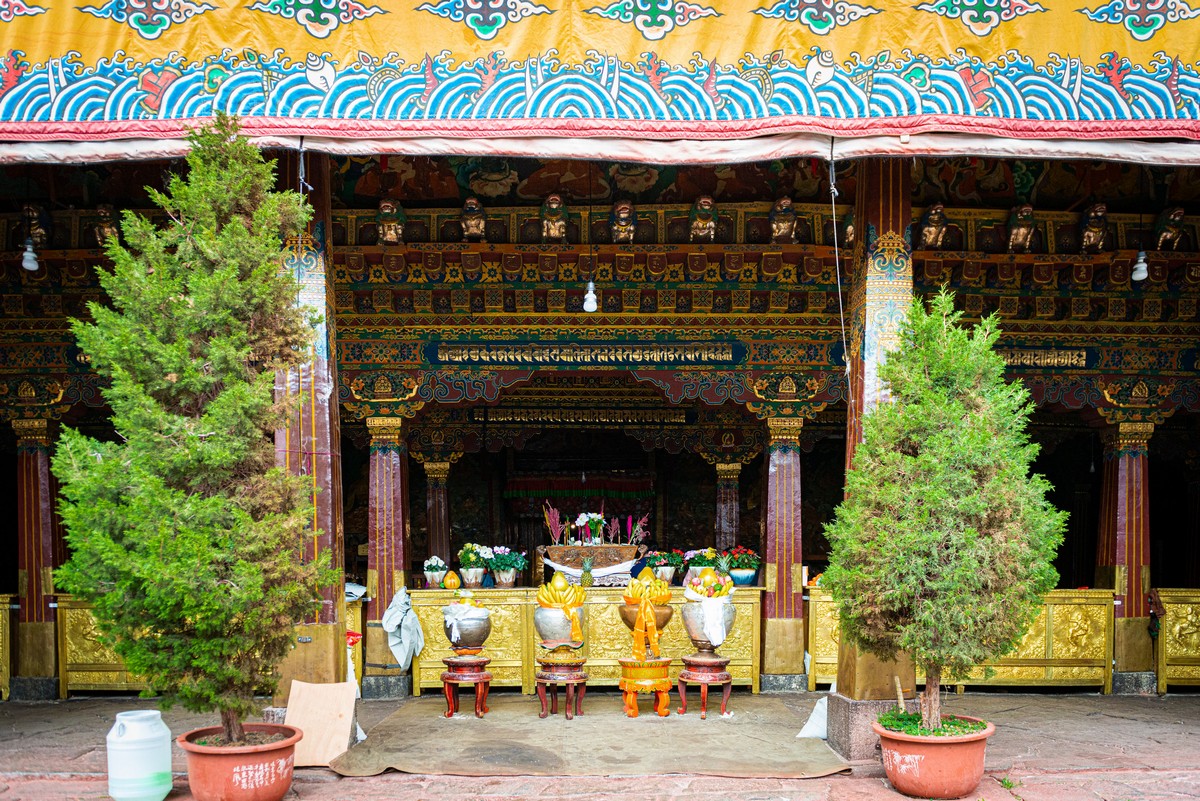
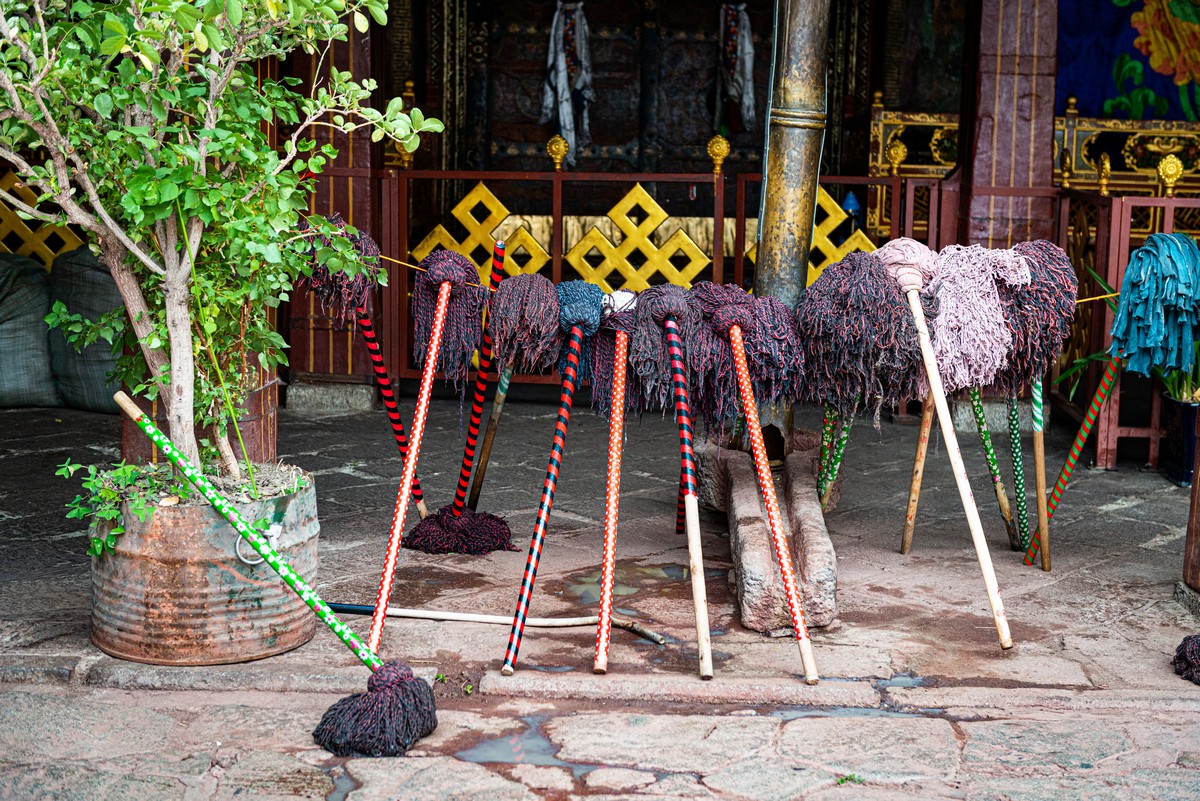

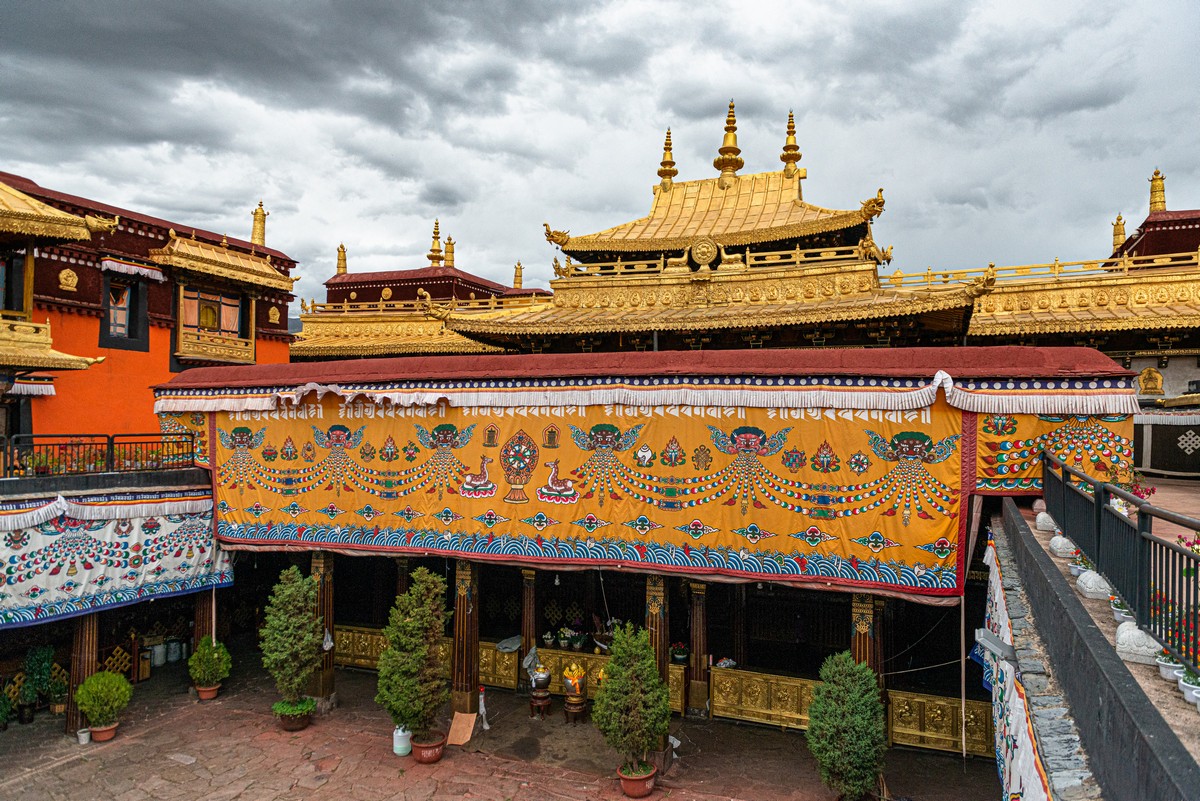
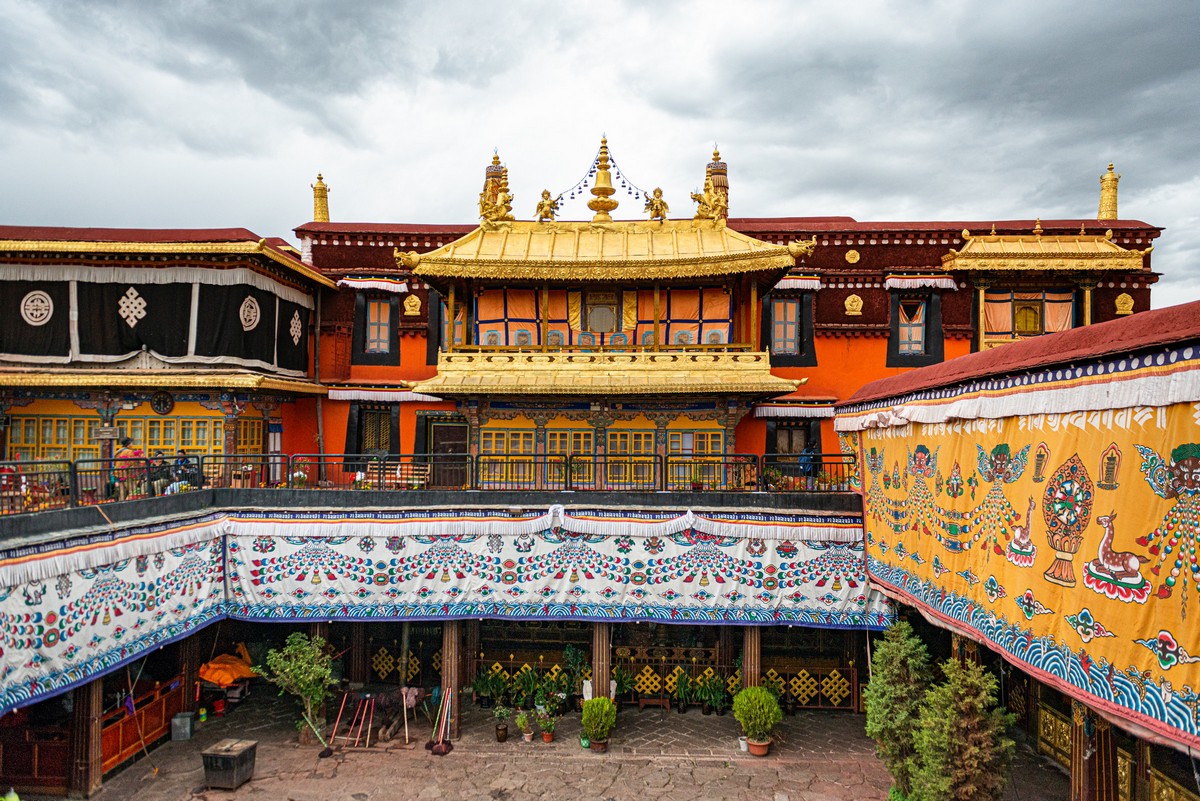
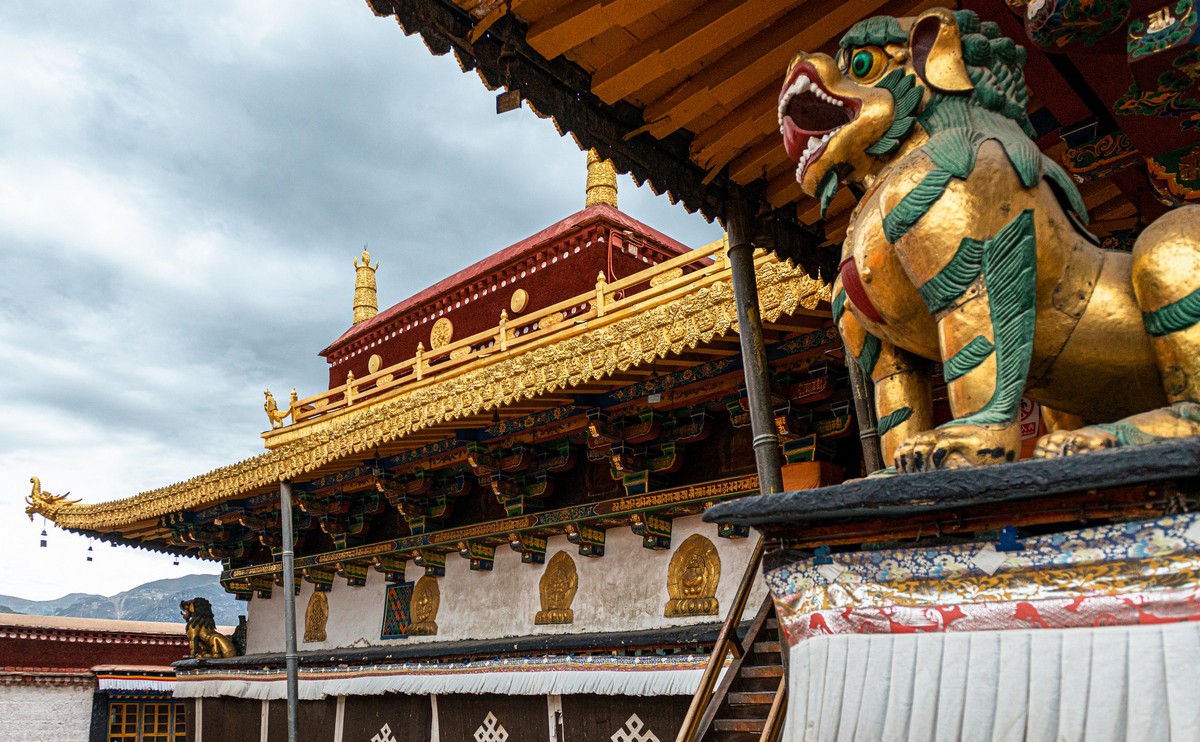

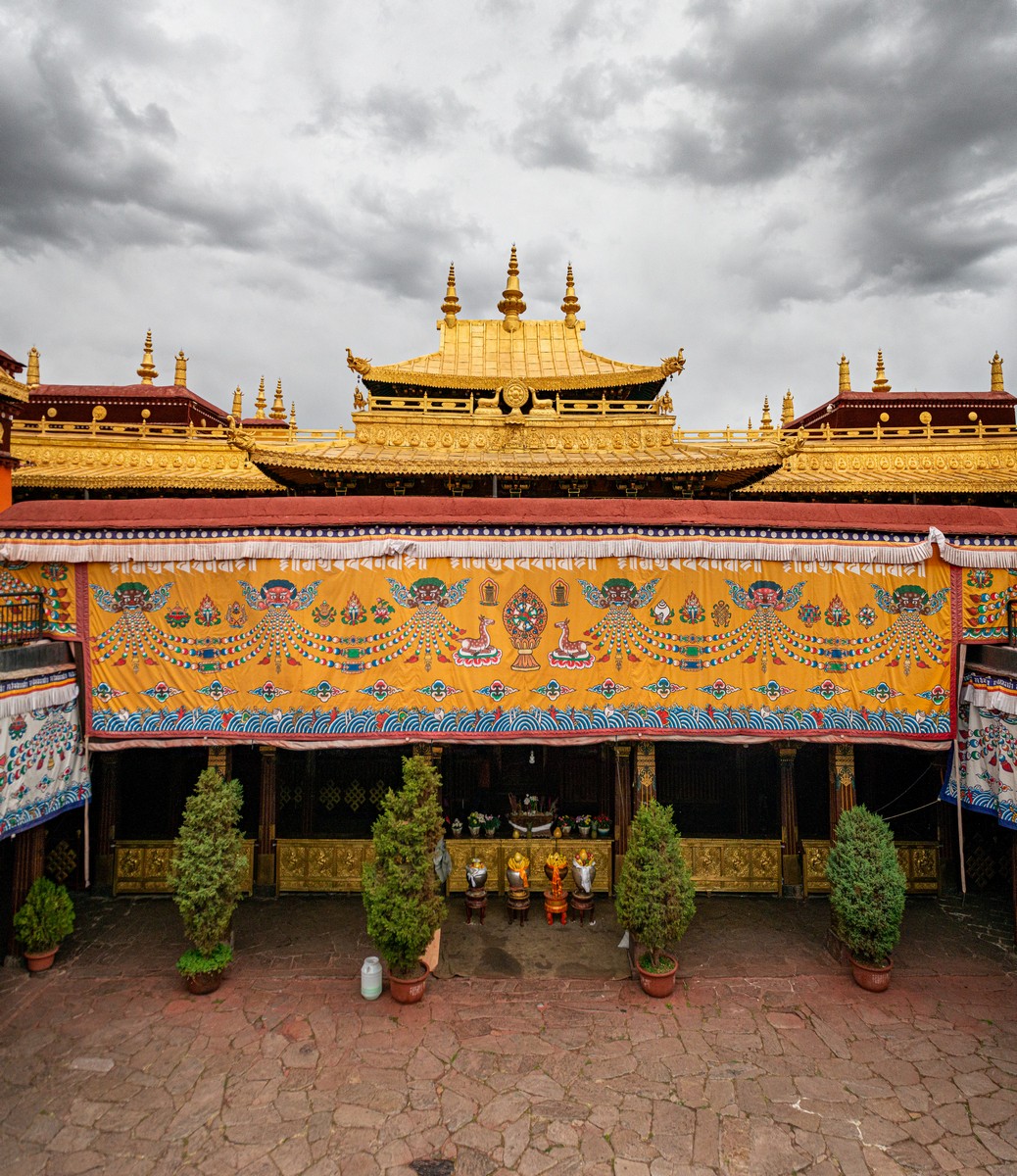
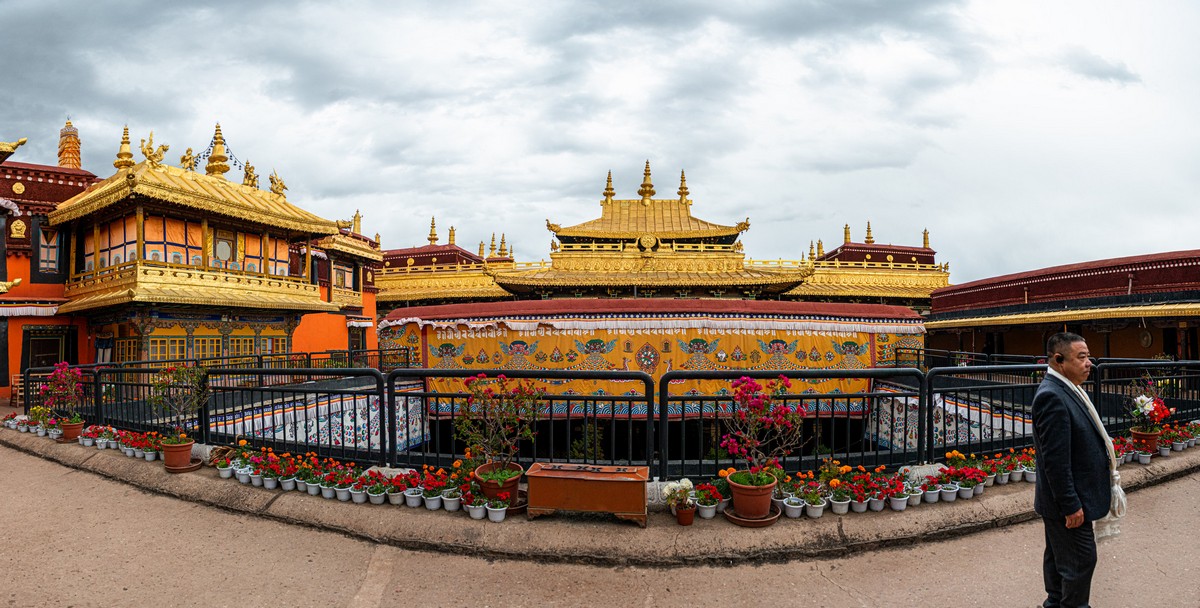
The rest of the photos from Tibet are here.

